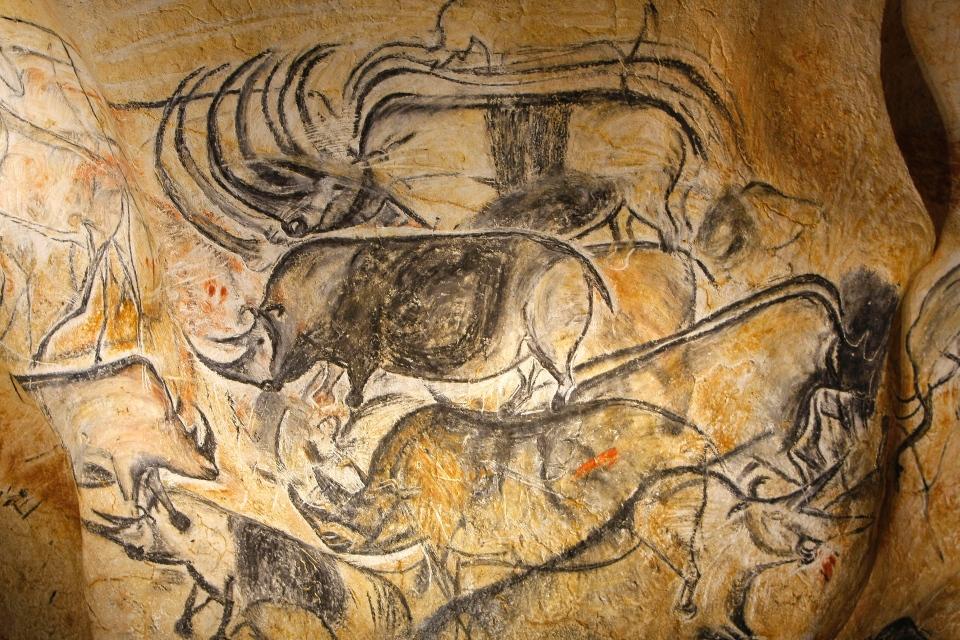
Image 1
Scene with a group of rhinoceroses
Provenance: Chauvet cave, Vallon-Pont-d’Arc (France)
Place
of conservation: In situ
Chronology: Palaeolithic, Aurignacian
period, 33,000 BCE
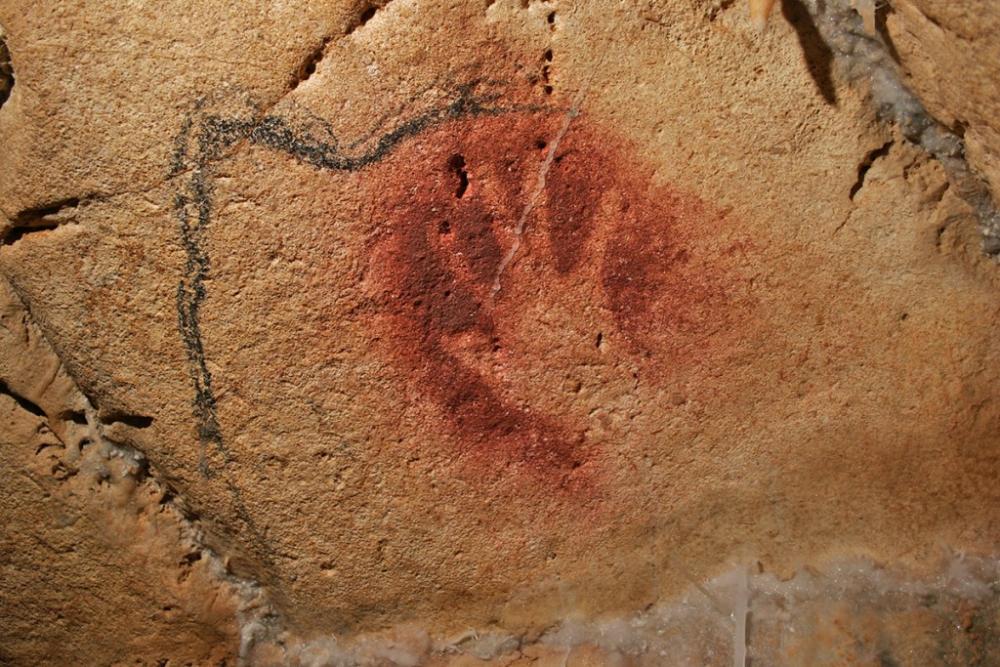
Image 2
Hand’s red-painted negative
Provenance: Chauvet cave,
Vallon-Pont-d’Arc (France)
Place of conservation: In
situ
Chronology: Palaeolithic, Aurignacian period, 34,000 BCE
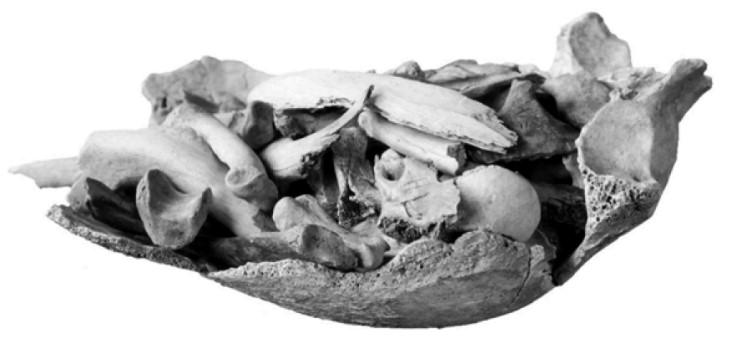
Image 3
Secondary burial with the top of the cranium used as a container for
further human remains
Provenance: Brillenhöhle, Blaubeuren
(Germany)
Place of conservation: Prehistoric Museum of
Blaubeuren
Chronology: Upper Palaeolithic, Magdalenian period,
12,500 BCE
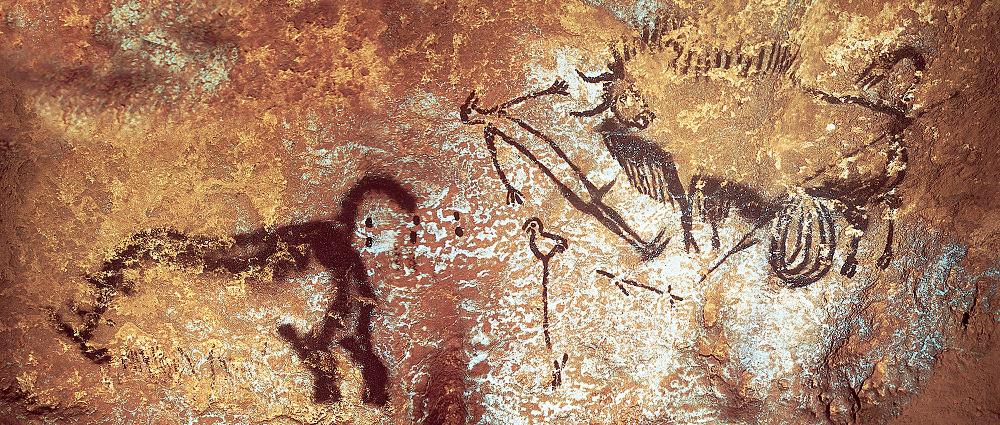
Image 4
Cave painting of a bird-headed man, bison, and
rhinoceros
Provenance: Lascaux cave, Dordogne (France)
Place
of conservation: In situ
Chronology: Upper Palaeolithic,
Magdalenian period,15,000-13,000 BCE
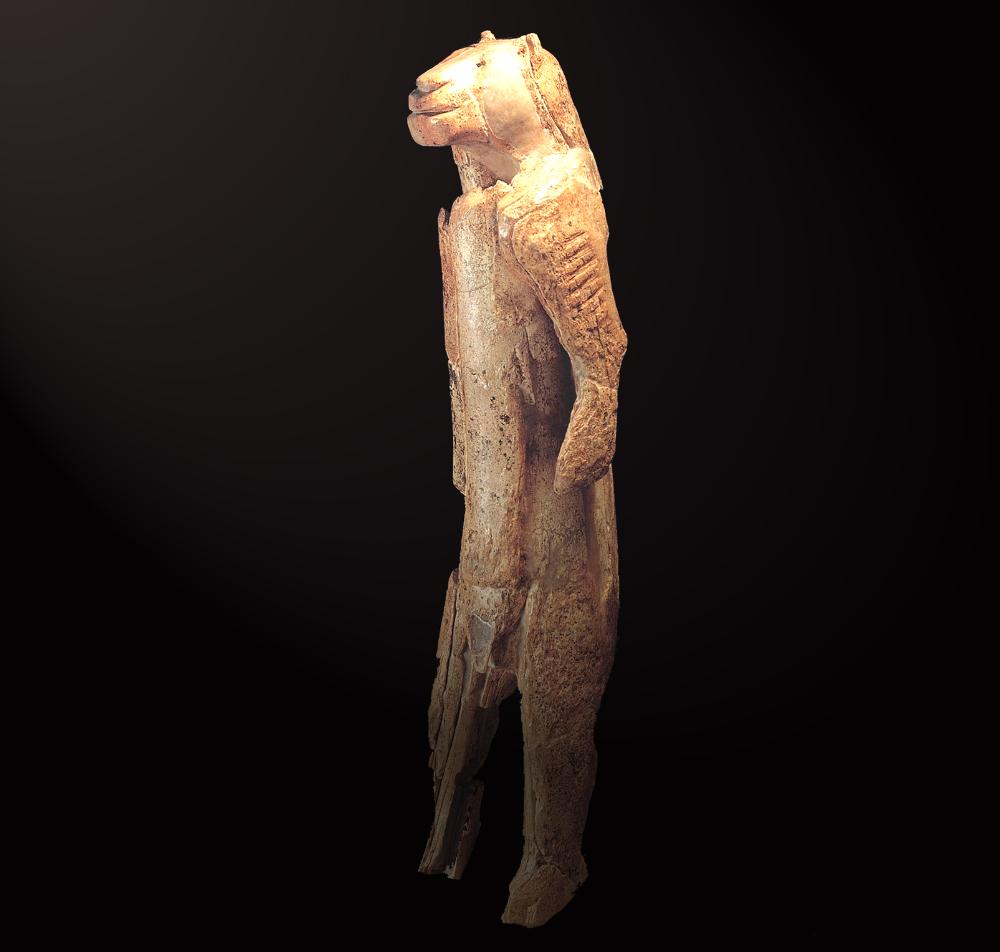
Image 5
Mammoth tusk figurine of a human with a lion’s head
Provenance:
Hohlenstein-Stadel, Ulm (Germany)
Place of conservation: Ulm
Museum
Chronology: Upper Palaeolithic, Aurignacian period,
38,000-33,000 BCE
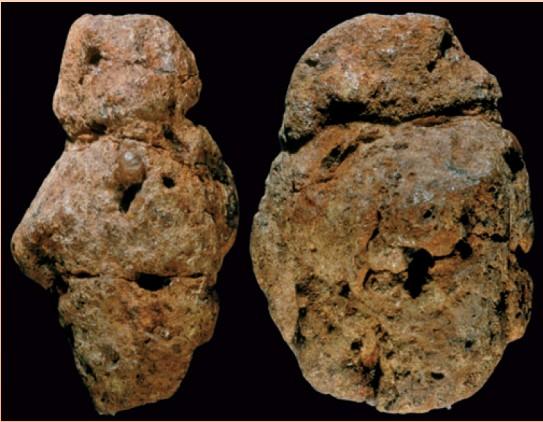
Image 6
Female figurine (?) carved from a red tunic pebble with at least
three intentional grooves (the oldest example of representational art
in the world?)
Provenance: Berekhat Ram, Golan Heights
(Israel)
Place of conservation: The Israel Museum,
Jerusalem
Chronology: Lower Palaeolithic, 230,000 BCE (Homo Erectus)
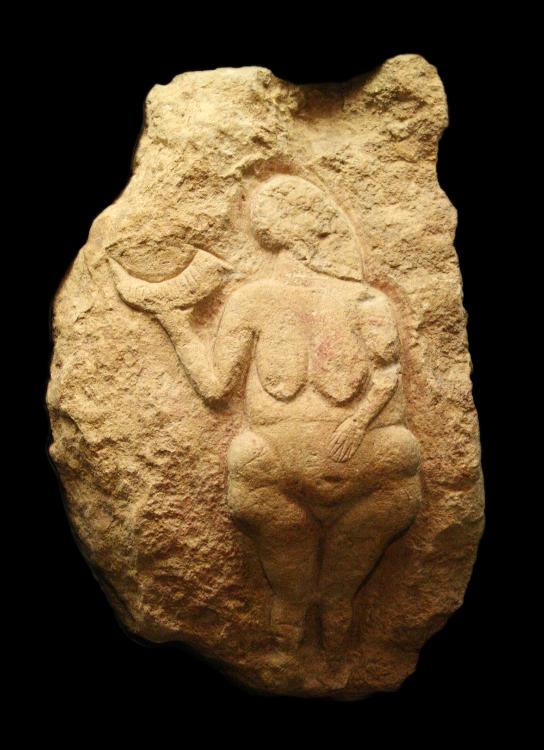
Image 7
The “Venus” of Laussel
Provenance: Laussel, Marquay
(France)
Place of conservation: Museum of Aquitania,
Bordeaux
Chronology: Upper Palaeolithic, Gravettian period,
23,000 BCE

Image 8
Vulture bone flute
Provenance: Geißenklösterle cave, Blaubeuren
(Germany)
Place of conservation: Prehistoric Museum of
Blaubeuren
Chronology: Upper Palaeolithic, Aurignacian period,
41,000-40,000 BCE
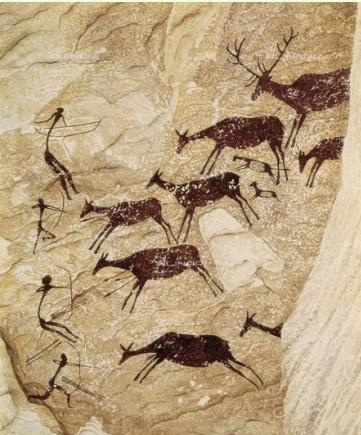
Image 9
Painting with a deer-hunting scene
Provenance: Valltorta, Tírig,
Valencia (Spain)
Place of conservation: In situ
Chronology:
Mesolithic, 8,000-6,000 BCE
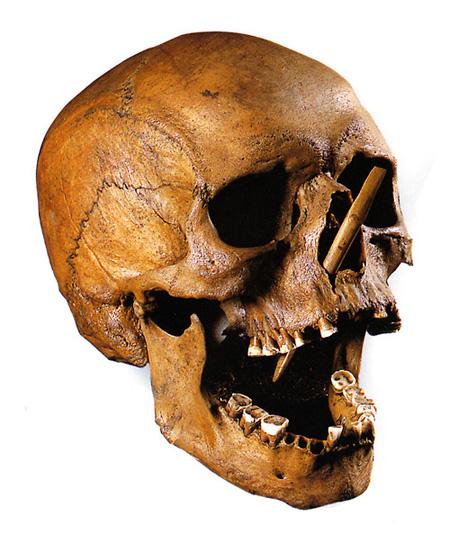
Image 10
Skull of a 35/40-year-old man struck by one arrowhead in the chest
and another in the face
Provenance: Porsmose (Denmark)
Place
of conservation: National Museum of Denmark
(Copenhagen)
Chronology: Neolithic, 2,600 BCE
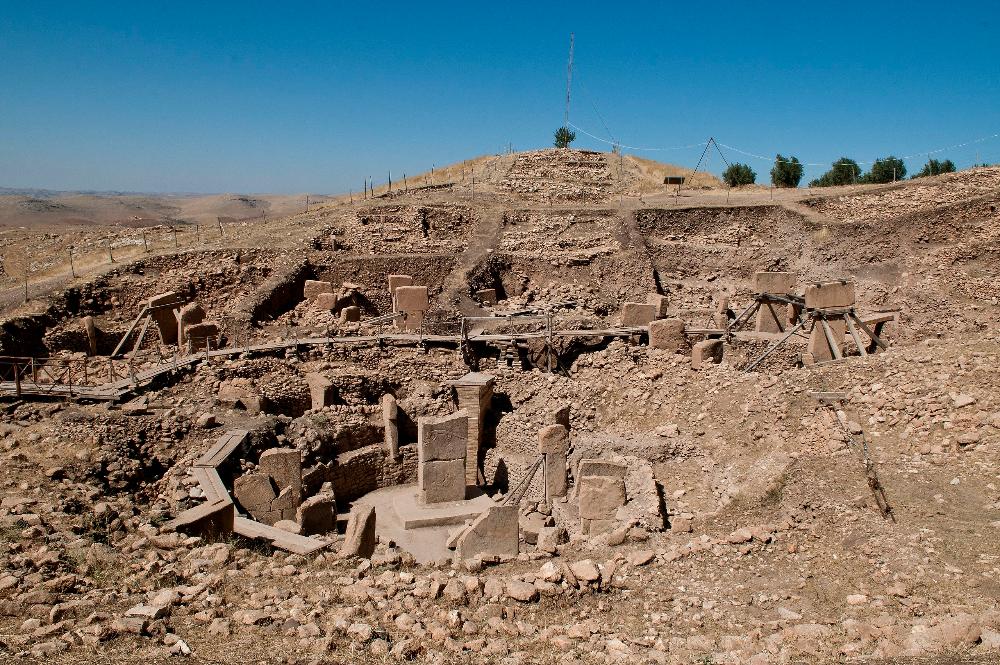
Image 11
The world’s oldest known sanctuary
Provenance: Göbleki Tepe,
Şanlıurfa (Turkey)
Place of conservation: In
situ
Chronology: Pre Pottery Neolithic A, 9,500-9,000 BCE
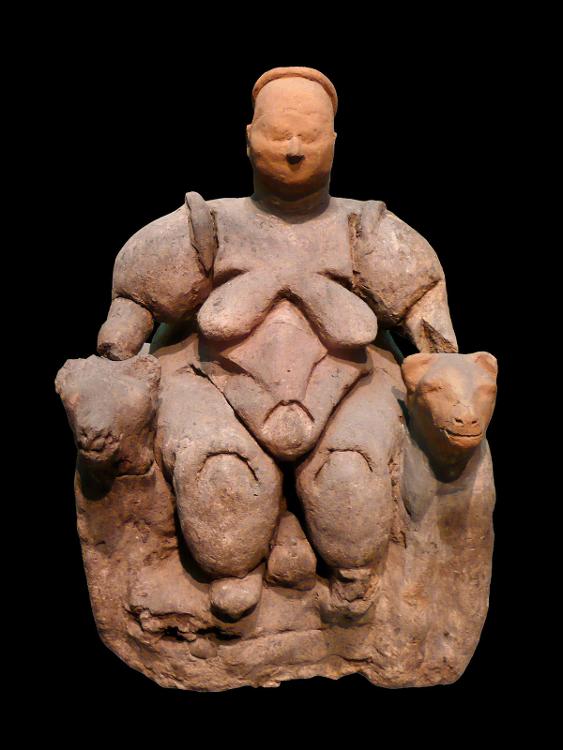
Image 12
Seated female clay figurine between feline-headed
arm-rests
Provenance: Çatalhöyük, Konya (Turkey)
Place of
conservation: Museum of Anatolian Civilizations
(Ankara)
Chronology: Neolithic, 6,000 BCE
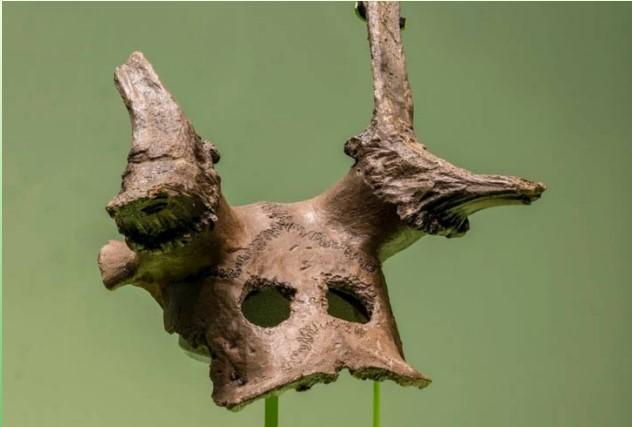
Image 13
Mask made with a deer skull with carved eyeholes
Provenance:
Star Carr, Scarborough (UK)
Place of conservation: Scarborough
Museum
Chronology: Mesolithic, 9,000 BCE
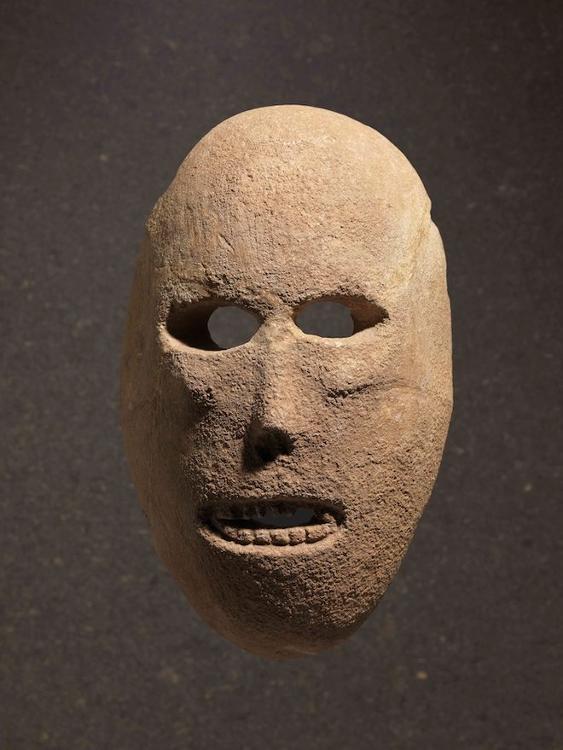
Image 14
Limestone mask decorated with paint
Provenance: Nahal Hemar
cave, Judean Desert (Israel)
Place of conservation: Israel Museum
(Jerusalem)
Chronology: Pre-Pottery Neolithic B, 7,000 BCE
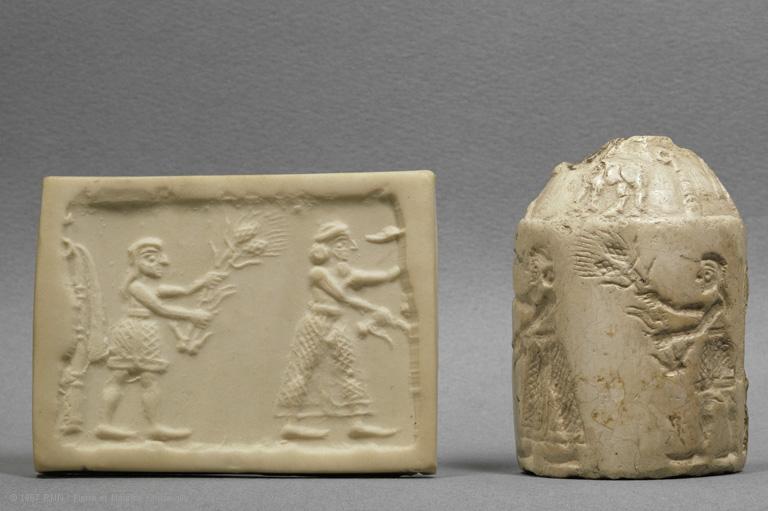
Image 21
cylinder seal showing a “priest-king” participating in a liturgical
ceremony
Provenance: unknown (Iraq)
Place of conservation:
Louvre (Paris)
Chronology: Bronze Age, 3,200 BCE
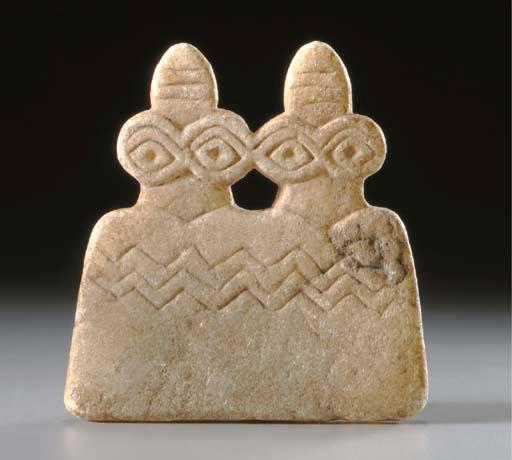
Image 22
Syrian marble double “eye idol”
Provenance: Tell Brak
(Syria)
Place of conservation: Private
Collection
Chronology: 3,500-3,300 BCE
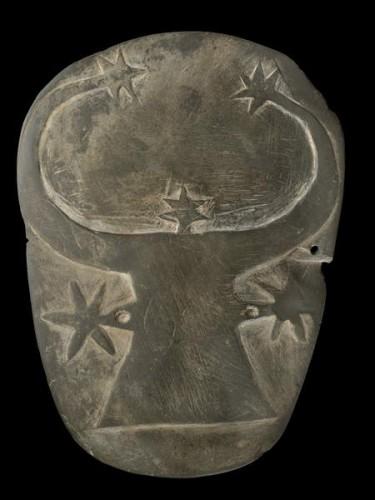
Image 23
Gerza schist palette depicting the goddess Hathor in the form of a
cow
Provenance: Tomb 59, Gerza (Egypt)
Place of
conservation: Egyptian Museum (Cairo)
Chronology: Bronze Age,
Naqada II period, 3,650-3,300 BCE
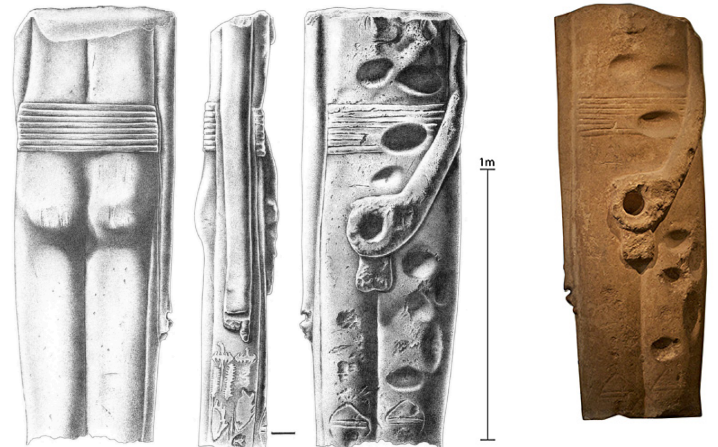
Image 24
Ithifallic colossus of Min
Provenance: Coptos (Egypt)
Place of conservation: Ashmolean
Museum (Oxford)
Chronology: Bronze Age, 3,300 BCE
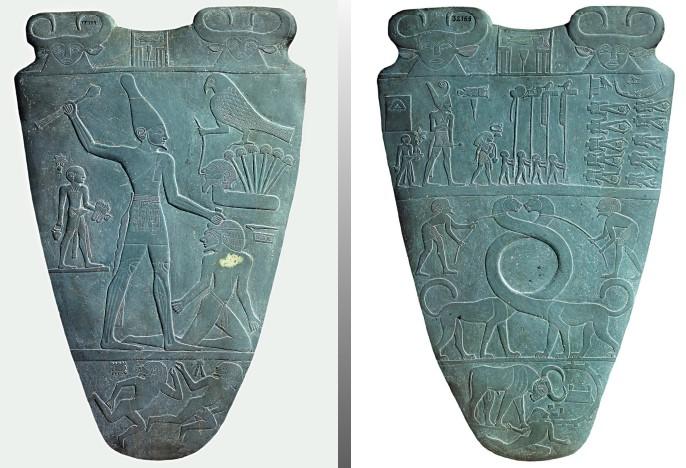
Image 25
Narmer palette
Provenance: Nekhen/Hierakonpolis
(Egypt)
Place of conservation: Egyptian Museum
(Cairo)
Chronology: 3,200-3,000 BCE
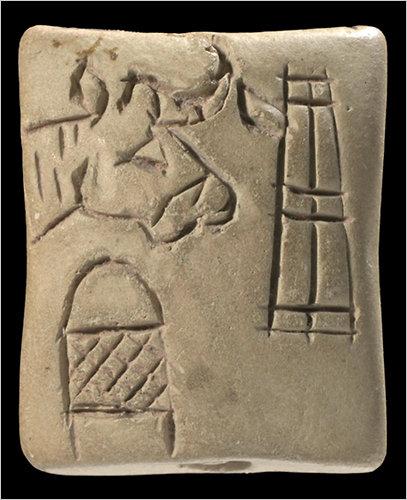
Image 26
Clay tag with proto-cuneiform glyphs
Provenance: Uruk
(Iraq)
Place of conservation: Vorderasiatisches Museum
(Berlin)
Chronology: Bronze Age, Uruk IV period, 3,350-3,200 BCE
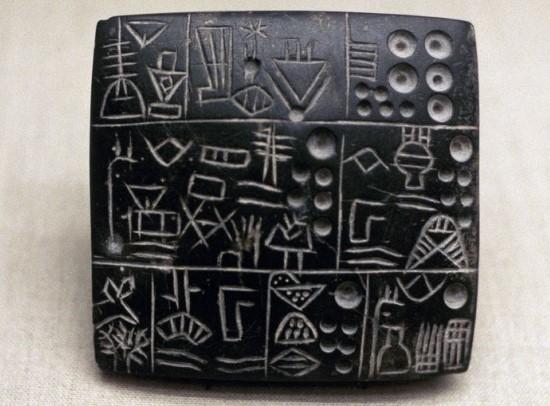
Image 27
Proto-cuneiform Mesopotamian tablet
Provenance: Uruk
(Iraq)
Place of conservation: Los Angeles Country Museum of Art
(California)
Chronology: Bronze Age, Uruk IV, 3,350-3,200 BCE
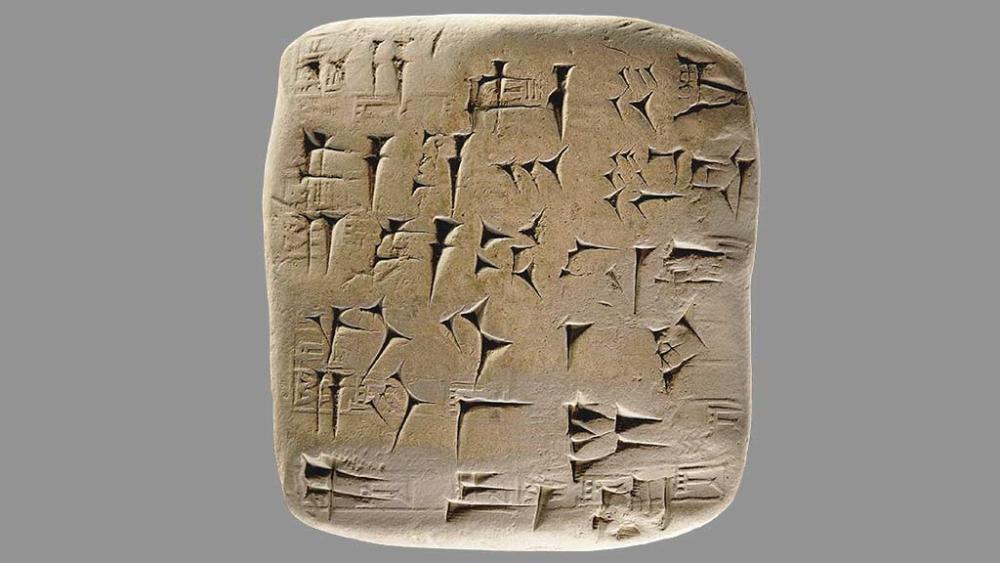
Image 28
Cuneiform Mesopotamian tablet
Provenance: Umma (Iraq)
Place
of conservation: Spurlok Museum of World Cultures
(Illinois)
Chronology: Bronze Age, Ur III, 2,000 BCE
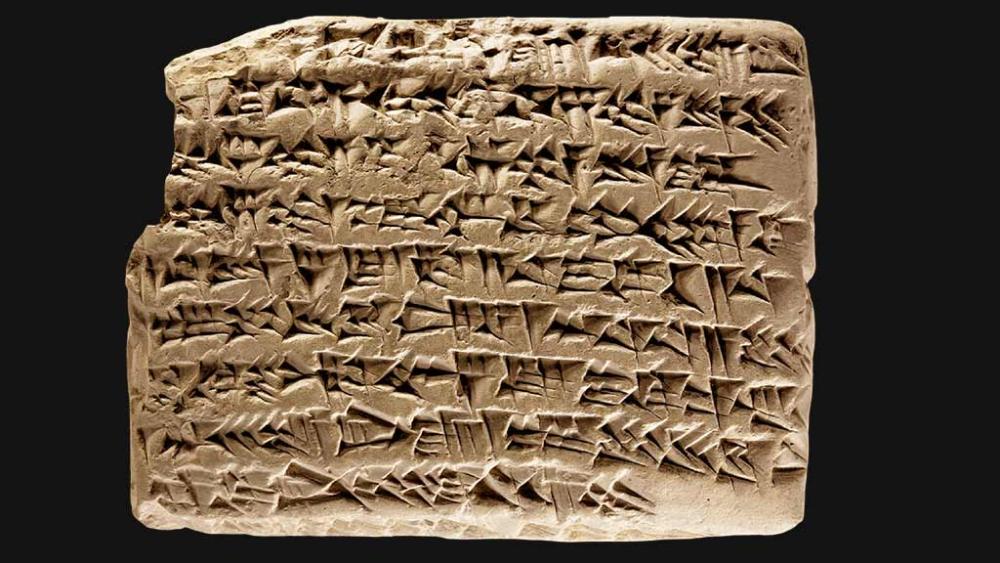
Image 29
Cuneiform Mesopotamian tablet
Provenance: Uruk (Iraq)
Place
of conservation: Spurlok Museum of World Cultures
(Illinois)
Chronology: Neo-Babylonian Period, 606-539 BCE
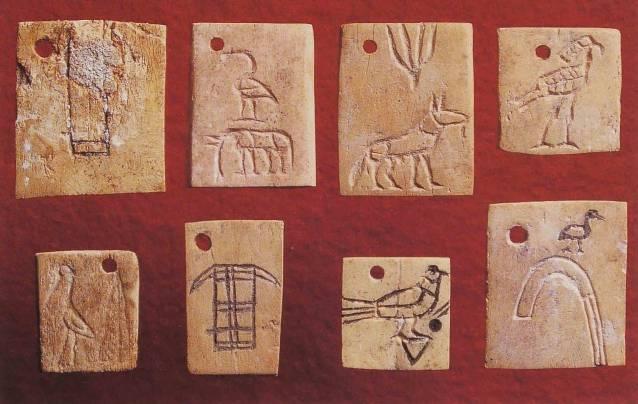
Image 30
Bone and ivory tags
Provenance: Tomb UJ, Abydos
(Egypt)
Place of conservation: Deutsches Archäologisches Institut
Cairo?
Chronology: Bronze Age, Dynasty 0, 3,320-3,150 BCE
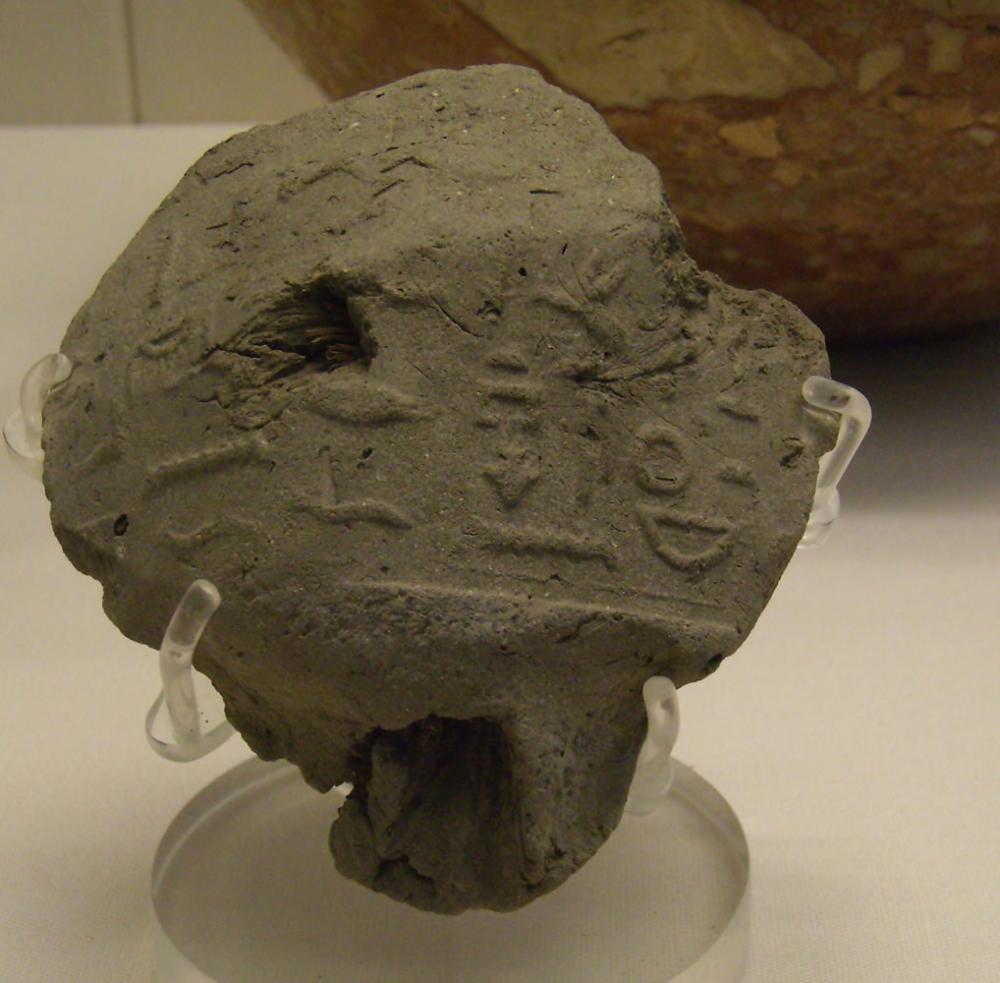
Image 31
Seal impression with the first complete hieroglyphic
sentence
Provenance: Tomb of Seth-Peribsen, Umm el-Qa’ab
(Egypt)
Place of conservation: British Museum
(London)
Chronology: Bronze Age, Dynasty 2, 28th-27th cent. BCE
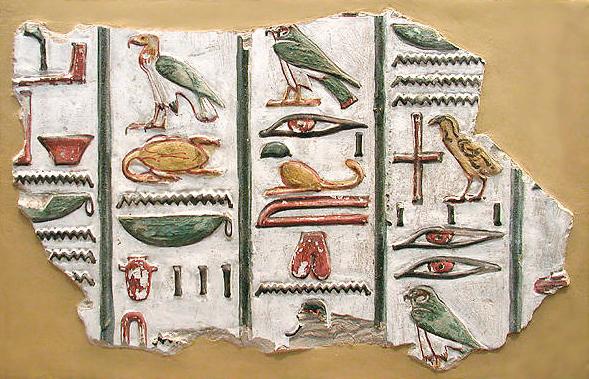
Image 32
Fragment of wall decoration with hieroglyphs
Provenance: Tomb of
Seti I, Valley of the Kings (Egypt)
Place of conservation:
British Museum (London)
Chronology: New Kingdom, 19th Dynasty,
1291-1279 BCE
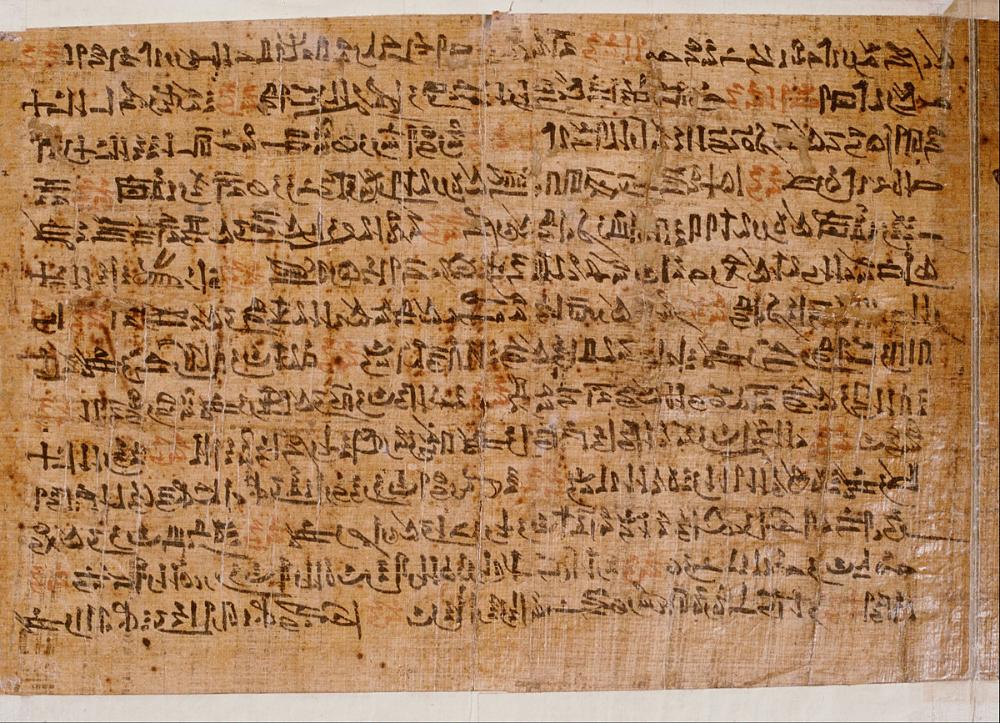
Image 33
Ipuwer papyrus in hieratic language
Provenance:
unknown
Place of conservation: Dutch National Museum of
Antiquities (Leiden)
Chronology: New Kingdom, 19th Dynasty,
1292-1186 BCE
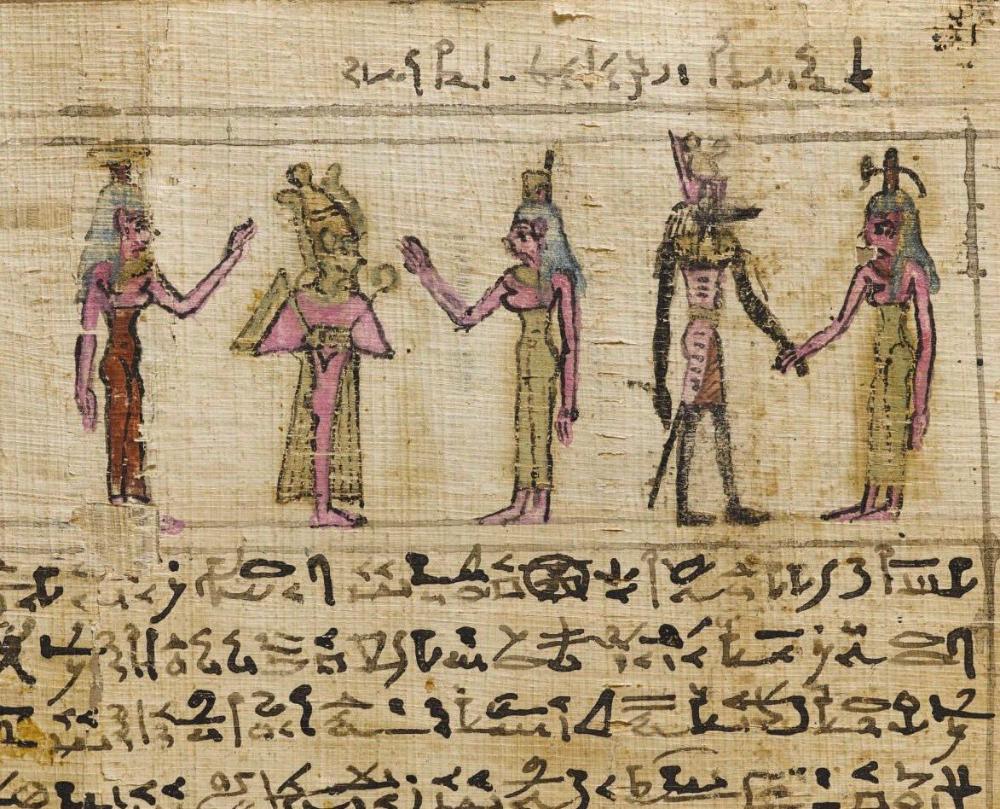
Image 34
funerary papyrus of Tanuat (P.Rhind II) in demotic
language
Provenance: Abd el-Qurna, Thebes (Egypt)
Place of
conservation: Royal Scottish Museum (Edinburgh)
Chronology: Roman
period, 9 BCE
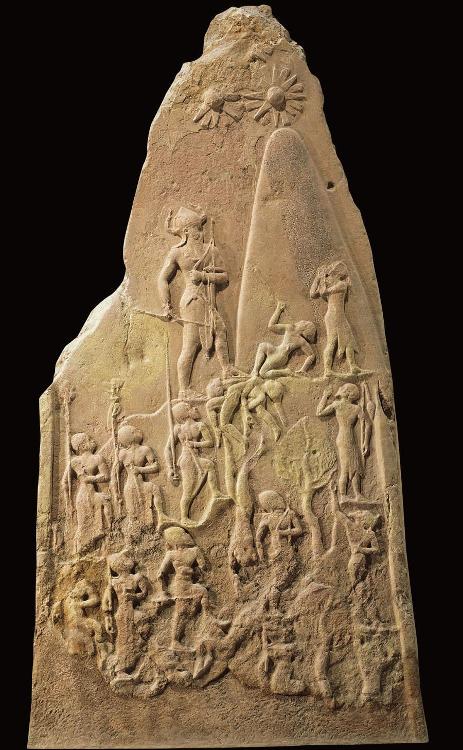
Image 35
Stele celebrating the victory of NaramSin (reigning 2254-2218 BCE)
against the Lullubi
Provenance: Susa (Iran)
Place of
conservation: Louvre (Paris)
Chronology: Akkadian Empire, ca.
2,230 BCE
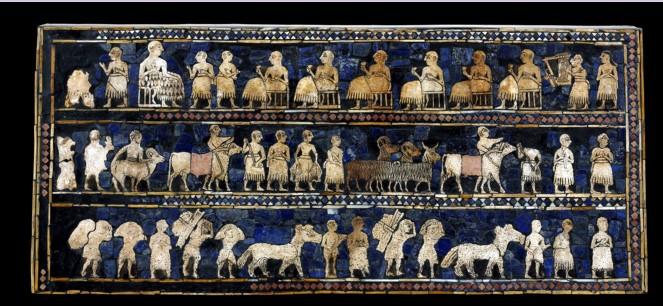
Image 36
The Standard of Ur
Provenance: Ur (Iraq)
Place of
conservation: British Museum (London)
Chronology: Early dynastic
period, 2,600 BCE
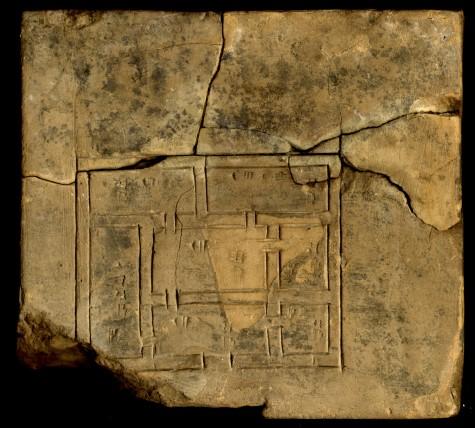
Image 37
Tablette with house ground plan
Provenance: Umma
(Iraq)
Place of conservation: Vorderasiatisches Museum
(Berlin)
Chronology: Ur III period, 2,050 BCE
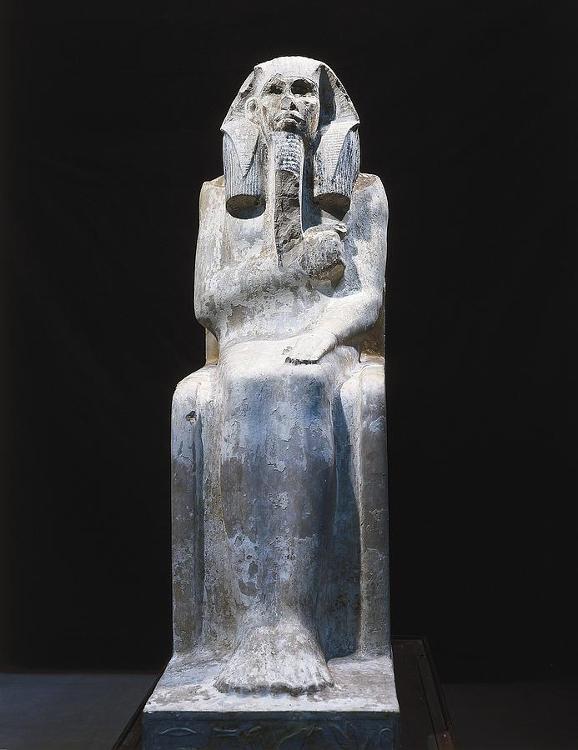
Image 38
Limestone statue of King Djoser
Provenance: Saqqara
(Egypt)
Place of conservation: Egyptian Museum
(Cairo)
Chronology: Old Kingdom, 3rd Dynasty, Ur III, 2,667-2,648 BCE
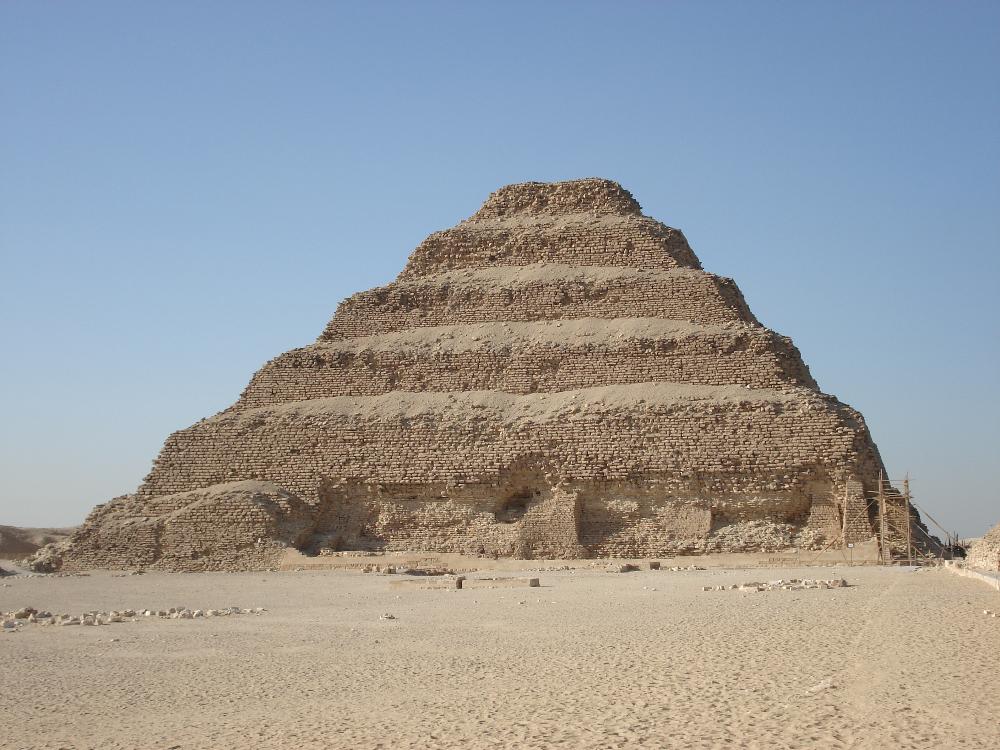
Image 39
The Pyramid of Djoser or Step Pyramid
Provenance: Saqqara
(Egypt)
Place of conservation: In situ
Chronology: Old
Kingdom, 3rd Dynasty, Ur III, 2,667-2,648 BCE
Image 40
Code of Hammurabi
Provenance: Susa (Iran), taken from Babylon as
plunder by the Elamite king Shutruk-Nahhunte (12th cent.
BCE)
Place of conservation: Louvre (Paris)
Chronology: 1,770 BCE
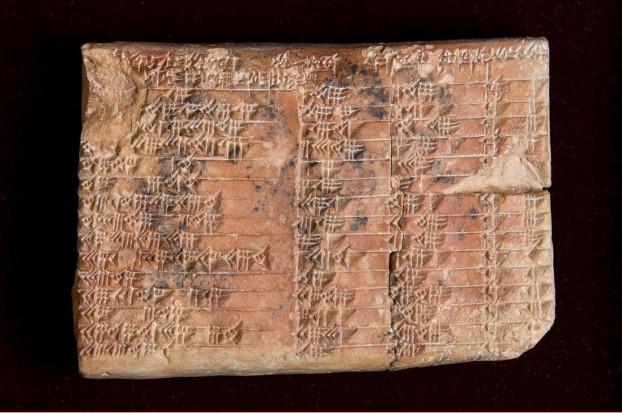
Image 41
Plimpton 332 tablet: the world’s oldest and most accurate
trigonometric table (?)
Provenance: Larsa (Iraq)
Place of
conservation: Columbia University (New York)
Chronology:
1,822-1,762 BCE
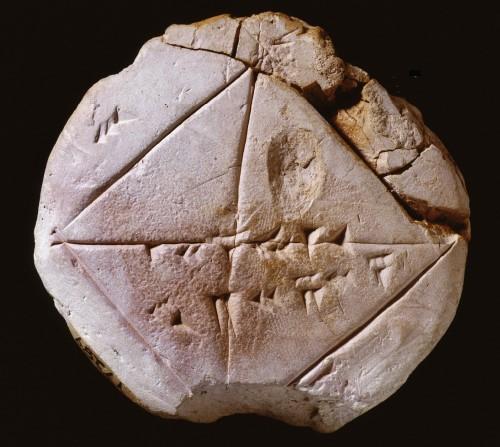
Image 42
Babylonian clay tablet YBC 7289 with representation of
√2
Provenance: Southern Mesopotamia (Iraq)
Place of
conservation: Yale Babylonian Collection
Chronology: 1,800-1,600 BCE
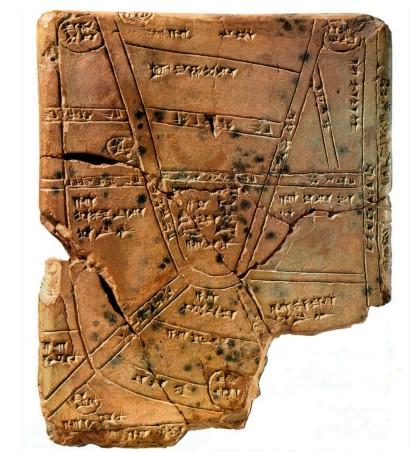
Image 43
First known depiction of a map, showing fields belonging to royal
estates in Nippur.
Provenance: Nippur (Iraq)
Place of
conservation: New York Public Library
Chronology: 1,500 BCE
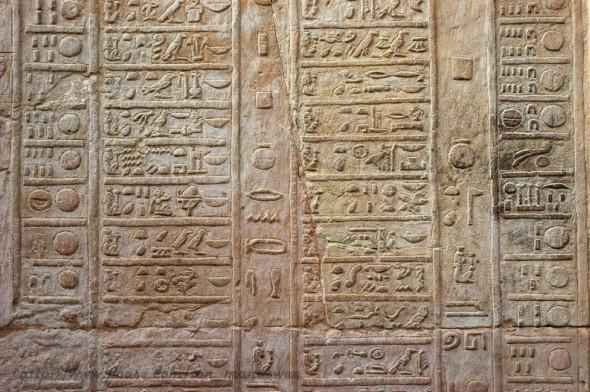
Image 44
Calendar with Nile floods and sacrifice requirements
Provenance:
Temple of Horus and Sobek, Kom Ombo (Egypt)
Place of
conservation: In situ
Chronology: 170 BCE
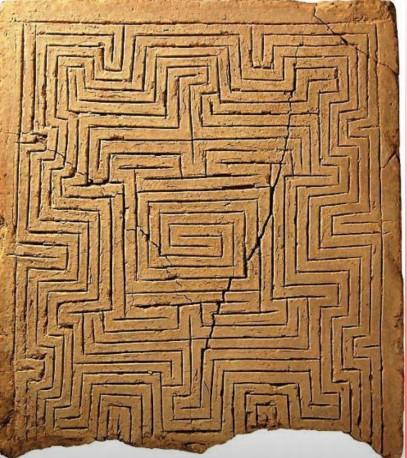
Image 45
Clay tablet with labyrinth
Provenance: Babylon (Iraq)
Place
of conservation: unknown
Chronology: 2,000-1,700 BCE
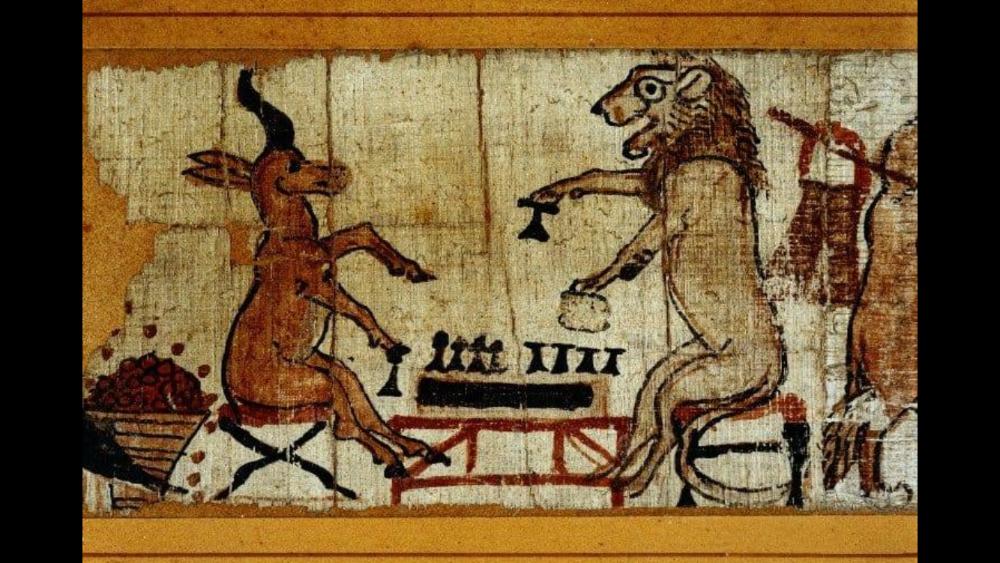
Image 46
Papyrus depicting a lion playing the board game of senet against a
gazelle
Provenance: Deir el-Medina (Egypt)
Place of
conservation: British Museum (London)
Chronology: 1,250-1,150 BCE
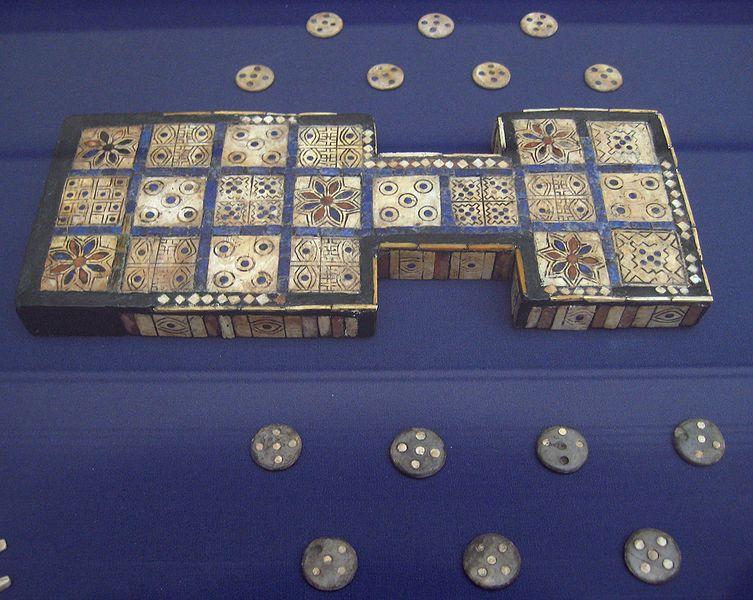
Image 47
Royal Game of Ur or Game of Twenty Squares
Provenance: Ur
(Iraq)
Place of conservation: British Museum
(London)
Chronology: 2,600-2,400 BCE
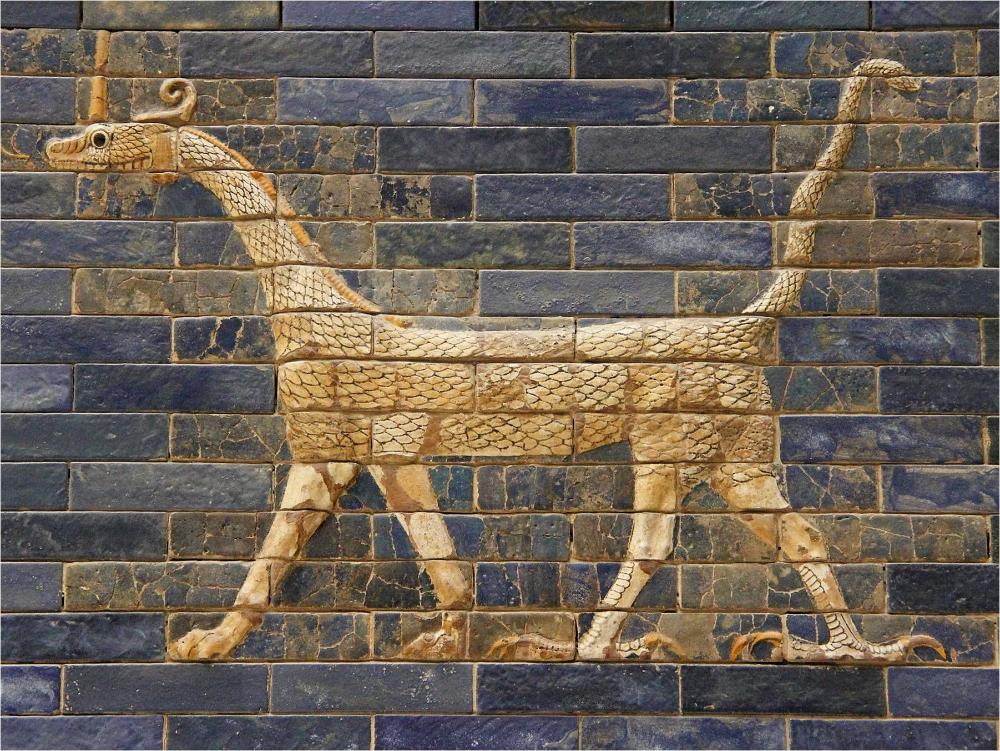
Image 48
Brick relief representing the snakedragon Mušḫuššu
Provenance:
Ishtar Gate, Babylon (Iraq)
Place of conservation: Pergamon
Museum (Berlin)
Chronology: Neo-Babylonian, 604-562 BCE
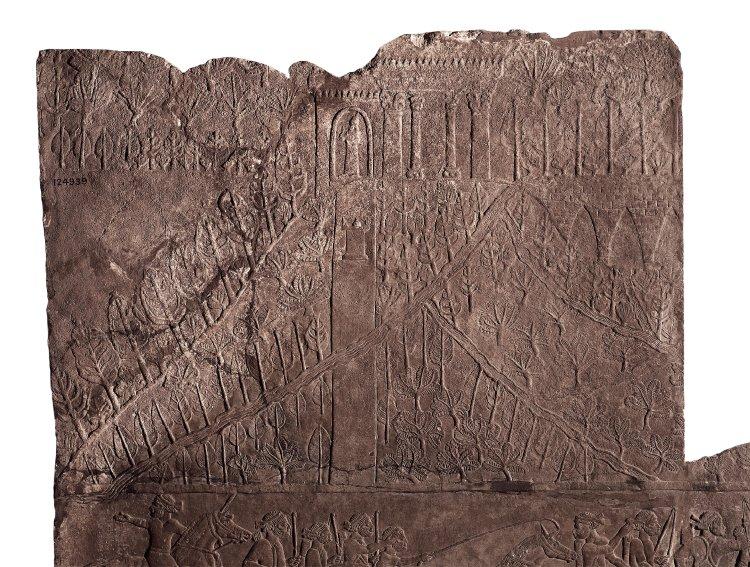
Image 49
Wall panel relief representing a possibly parkland in Nineveh with
irrigation canals, aqueduct, path with altar, and a
pavilion
Provenance: North Palace, Nineveh (Iraq)
Place of
conservation: British Museum (London)
Chronology: Neo-Assyrian,
645-635 BCE
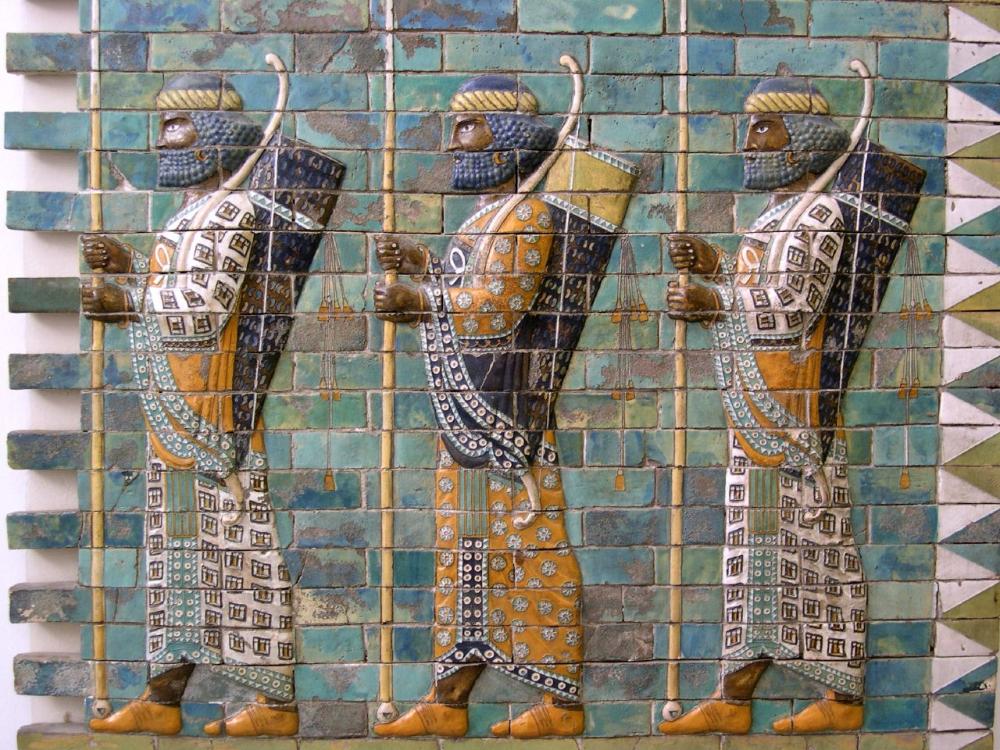
Image 50
Relief representing Darius I’s elite warriors (the “Immortals”)
Provenance: Susa (Iran)
Place of conservation: Pergamon
Museum (Berlin)
Chronology: 500 BCE
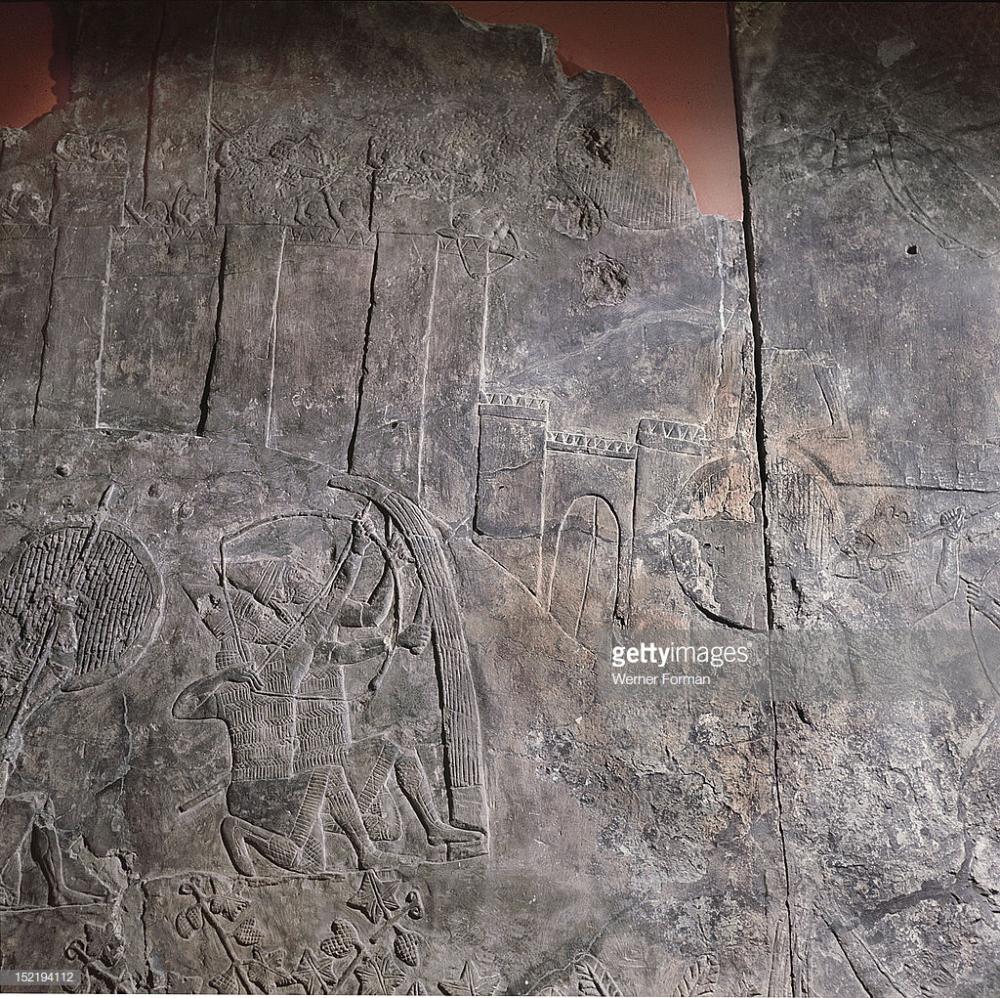
Image 51
Relief representing Sennacherib attacking a walled city (probably Jerusalem)
Provenance: Nineveh (Iraq)
Place of conservation: British
Museum (London)
Chronology: 704-681 BCE
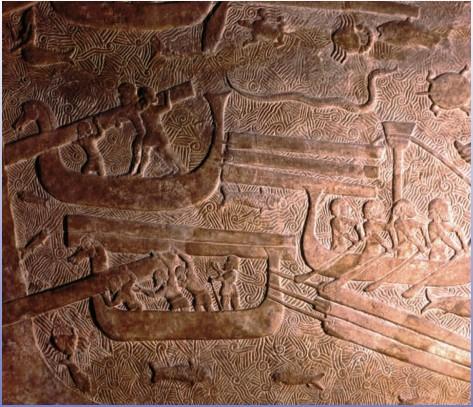
Image 52
Relief representing timber being unloaded from Phoenician ships
Provenance: Palace of Sargon II, Khorsabad (Iraq)
Place of
conservation: Louvre (Paris)
Chronology: 8th cent. BCE
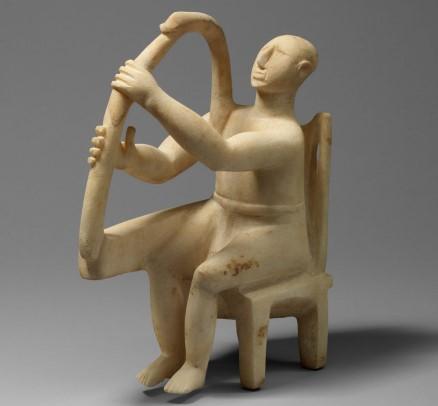
Image 53
Marble seated harp player
Provenance: Cyclades
(Greece)
Place of conservation: The Metropolitan Museum (New
York)
Chronology: Late Early Cycladic I - Early Cycladic II,
2,800-2,700 BCE
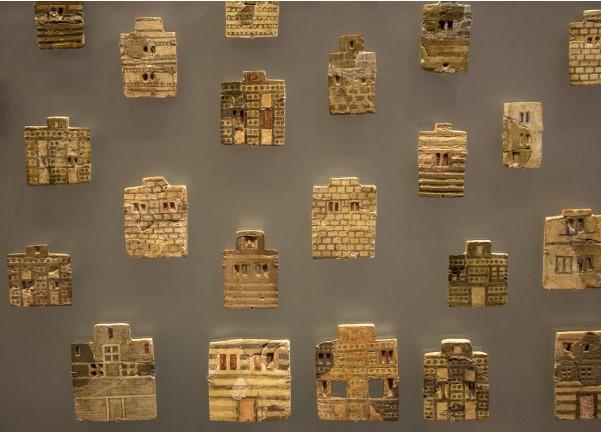
Image 54
Painted faience plaques
Provenance: Knossos (Crete)
Place
of conservation: Heraklion Archaeological Museum
Chronology:
1,700-1,600 BCE
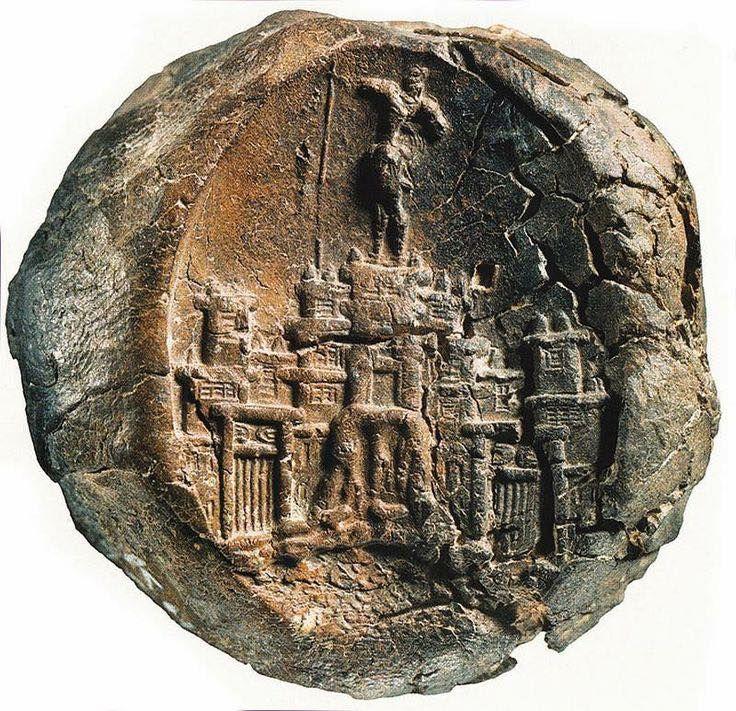
Image 55
The Master Impression representing Poseidon (?) on a temple
dominating the sea
Provenance: Chania (Crete)
Place of
conservation: The Chania Archaeological Museum
Chronology:
1,450-1,400 BCE
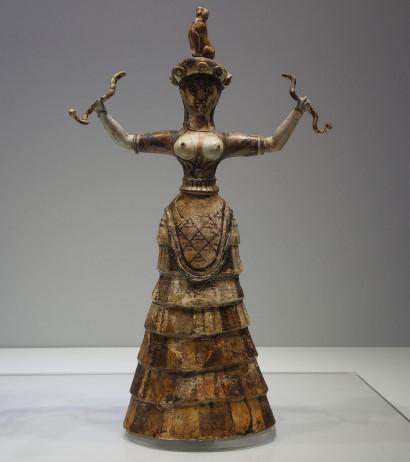
Image 56
The Snake Goddess
Provenance: Knossos (Crete)
Place of
conservation: Heraklion Archaeological Museum
Chronology: 1,600 BCE
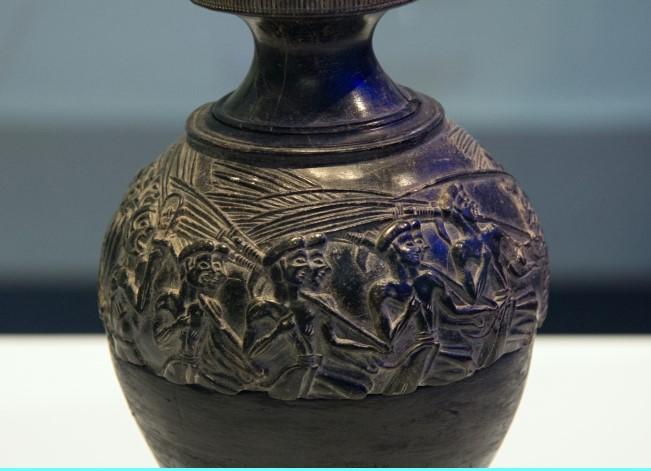
Image 57
The harvester vase
Provenance: Hagia Triada (Crete)
Place
of conservation: Heraklion Archaeological Museum
Chronology:
1,550-1,500 BCE
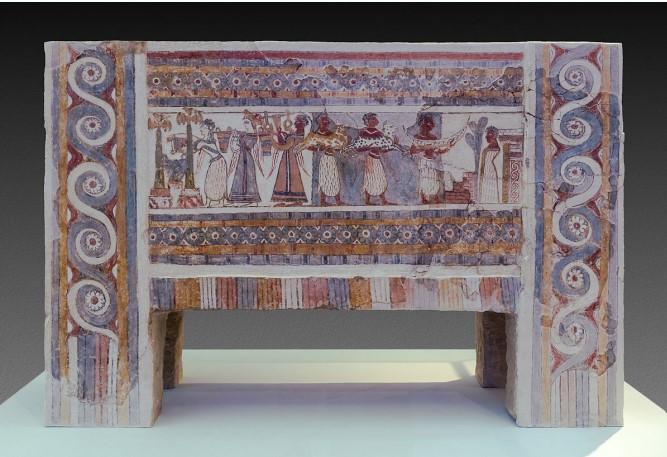
Image 58
The Hagia Triada sarcophagus
Provenance: Hagia Triada
(Crete)
Place of conservation: Heraklion Archaeological
Museum
Chronology: 1,370-1,320 BCE
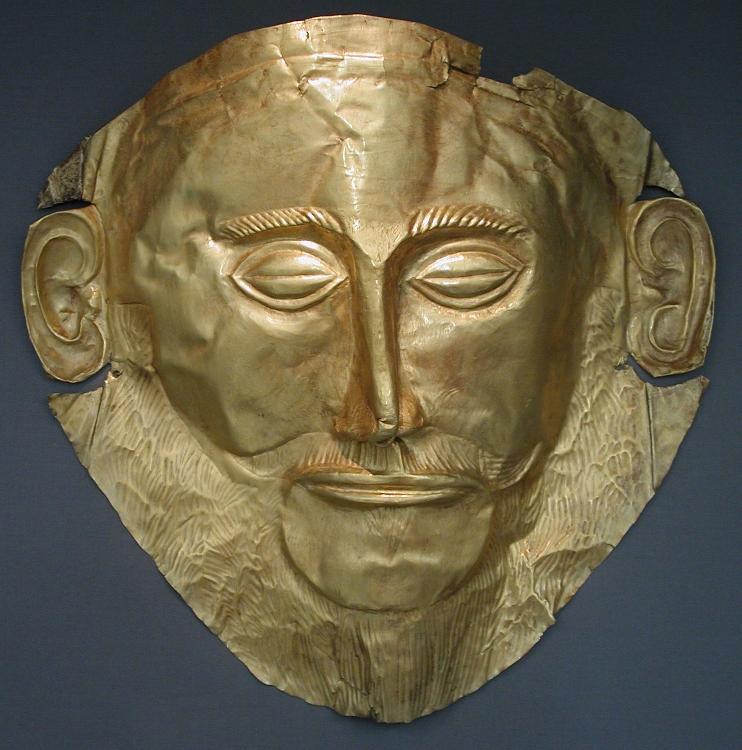
Image 59
The so-called “Mask of Agamemnon”
Provenance: Grave Circle A,
Mycenae (Greece)
Place of conservation: National Archaeological
Museum (Athens)
Chronology: 1,550-1,500 BCE
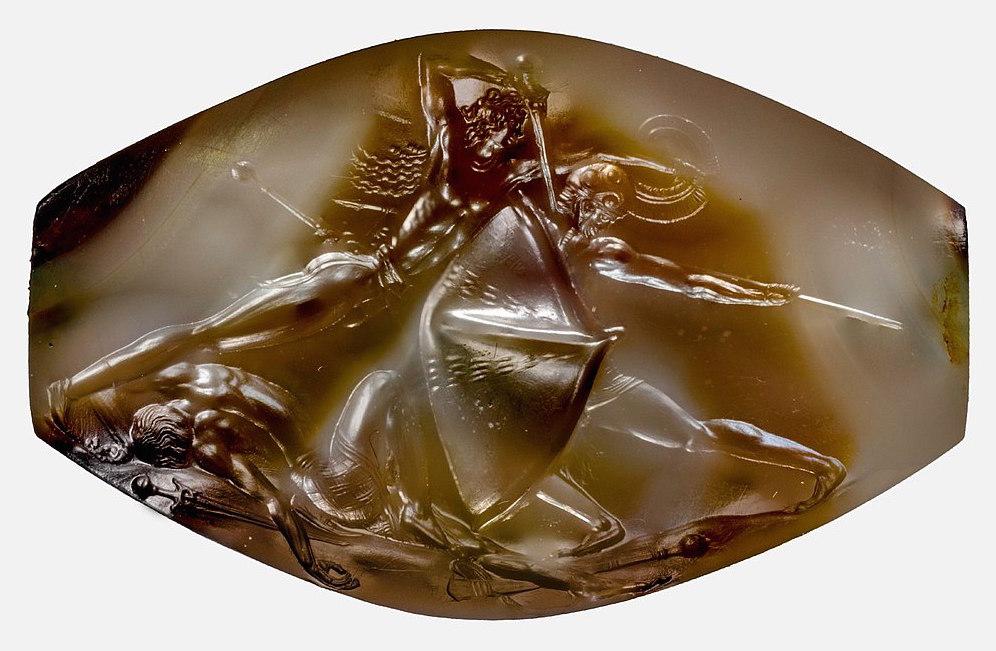
Image 60
The “Pylos Combat Agate”
Provenance: “Tomb of the Griffin
Warrior”, Pylos (Greece)
Place of conservation:
unknown
Chronology: 1,450 BCE

Image 61
Mycenaean dagger
Provenance: Grave Circle A, Mycenae
(Greece)
Place of conservation: National Archaeological Museum
(Athens)
Chronology: 1,600 BCE
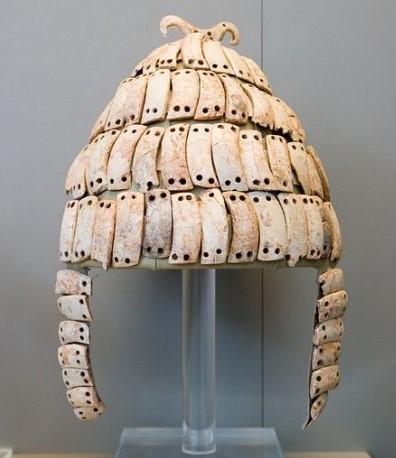
Image 62
Boar’s tusk helmet
Provenance: Mycenae (Greece)
Place of
conservation: National Archaeological Museum (Athens)
Chronology:
14th cent. BCE
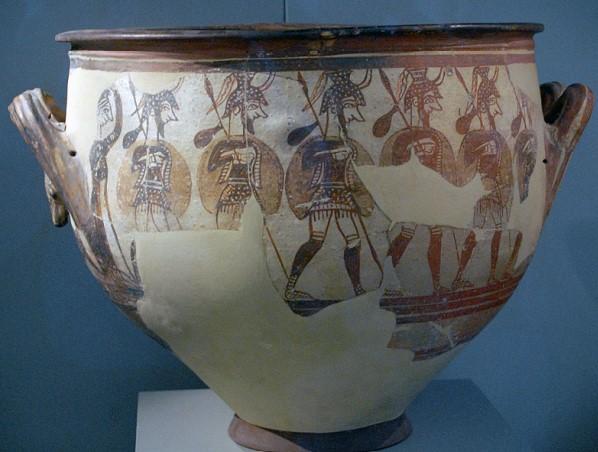
Image 63
The “Warrior Vase”
Provenance: Mycenae (Greece)
Place of
conservation: National Archaeological Museum (Athens)
Chronology:
13th cent. BCE
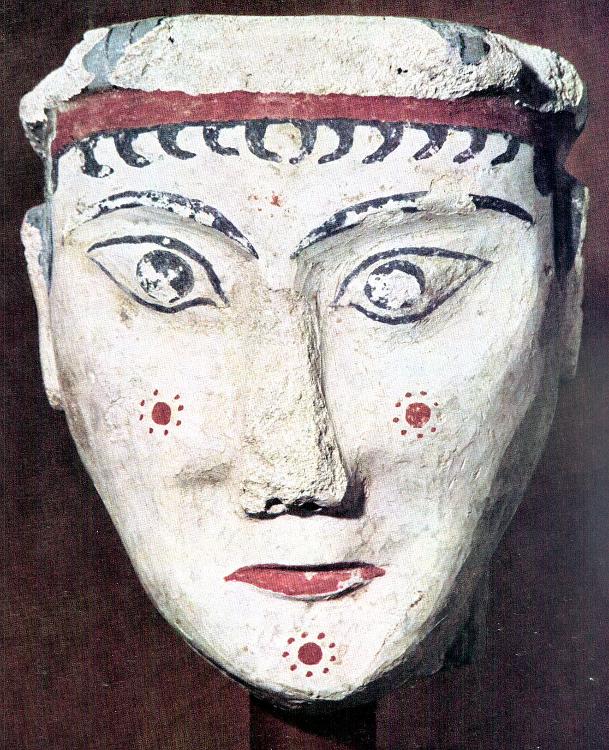
Image 64
Painted plaster head (sphinx?)
Provenance: Mycenae
(Greece)
Place of conservation: National Archaeological Museum
(Athens)
Chronology: 13th cent. BCE
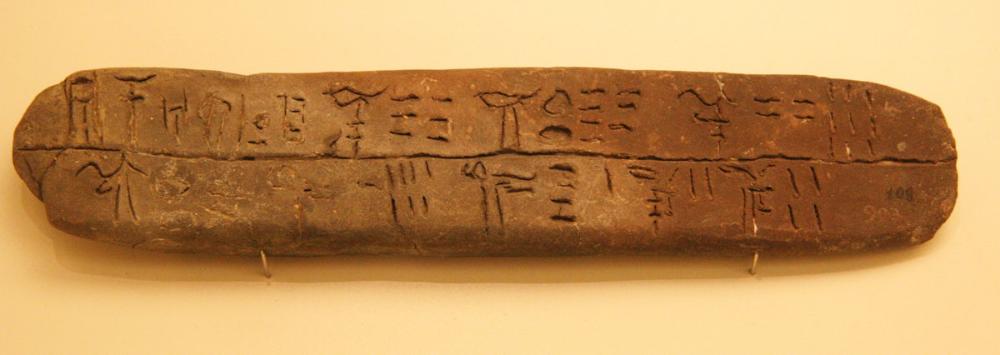
Image 65
Linear B tablet
Provenance: Knossos (Crete)
Place of
conservation: Archaeological Museum of Iraklion
Chronology: 1,450 BCE
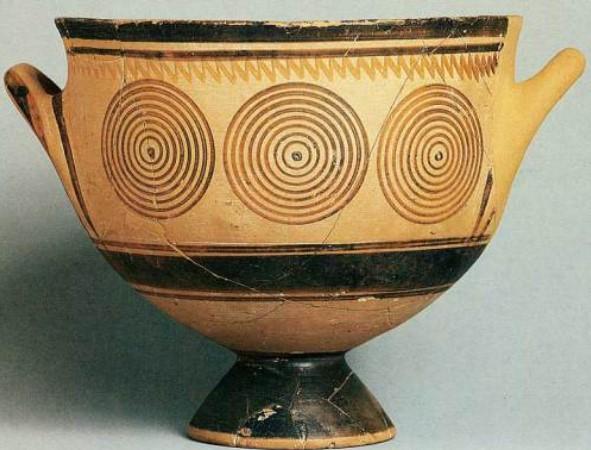
Image 66
Proto-geometric skyphos
Provenance: Kerameikos, Athens
(Greece)
Place of conservation: Kerameikos Archaeological Museum
(Athens)
Chronology: end of 11th - 10th cent. BCE
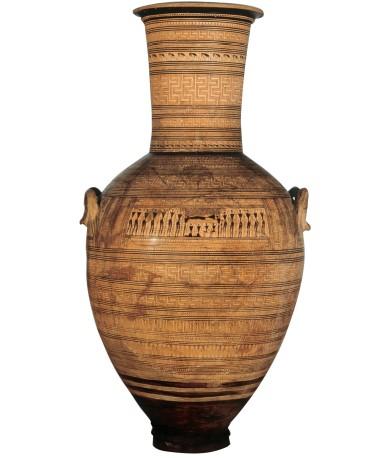
Image 67
Attic amphora
Provenance: Kerameikos, Athens (Greece)
Place
of conservation: National Archaeological Museum
(Athens)
Chronology: late Geometric IA, 760-750 BCE
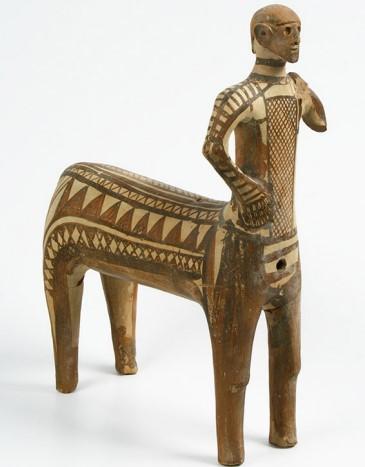
Image 68
Terracotta centaur
Provenance: Lefkandi (Greece)
Place of
conservation: Archaeological Museum of Eretria
Chronology: end of
the 10th cent. BCE
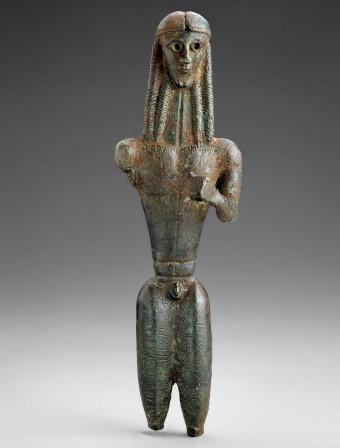
Image 69
Mantiklos Apollo
Provenance: Thebes (Greece)
Place of
conservation: National Archaeological Museum (Athens)
Chronology:
late Geometric, 700-675 BCE
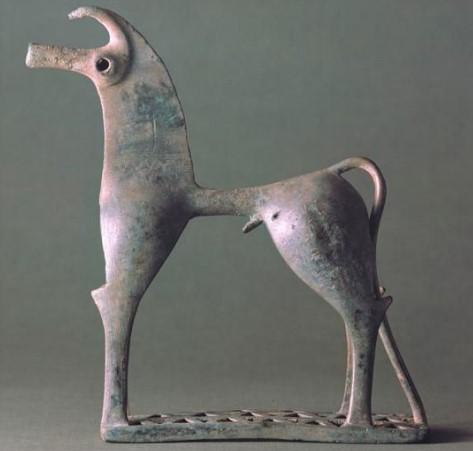
Image 70
Bronze statuette of a horse
Provenance: Olympia
(Greece)
Place of conservation: Altes Museum
(Berlin)
Chronology: Late Geometric, 730 BCE
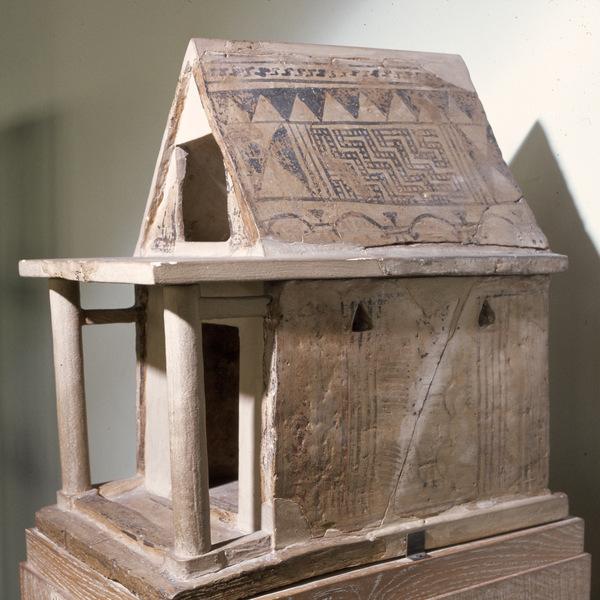
Image 71
Votive clay model of the Heraion
Provenance: Argos
(Greece)
Place of conservation: National Archaeological Museum
(Athens)
Chronology: 725-700 BCE
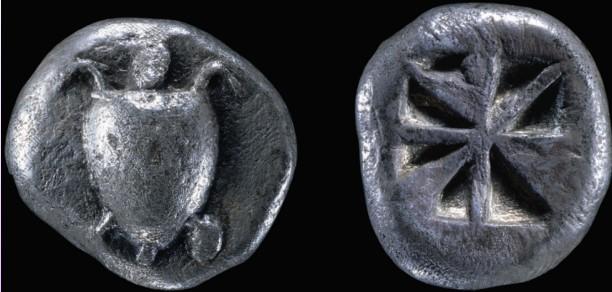
Image 72
Silver stater with a turtle
Provenance: Aegina
(Greece)
Place of conservation: unknown
Chronology: 6th
cent. BCE
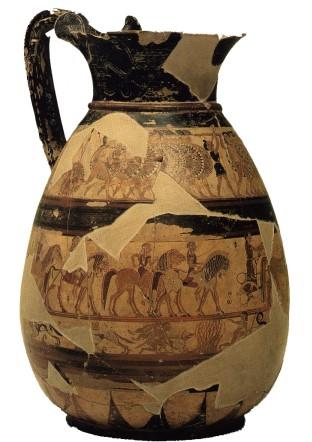
Image 73
The Chigi vase
Provenance: Veio (Italy)
Place of
conservation: National Etruscan Museum of Villa Giulia
(Rome)
Chronology: 650-640 BCE
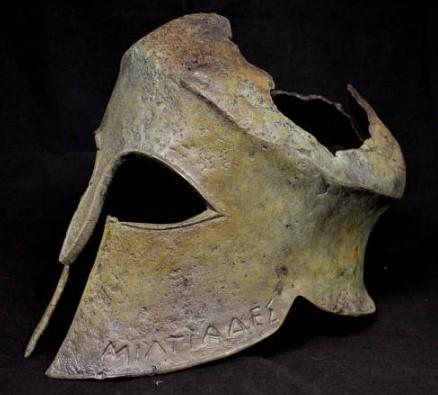
Image 74
The helmet of Miltiades, the Athenian general of the Battle of
Marathon
Provenance: Olympia (Greece)
Place of conservation:
Archaeological Museum of Olympia
Chronology: 490 BCE
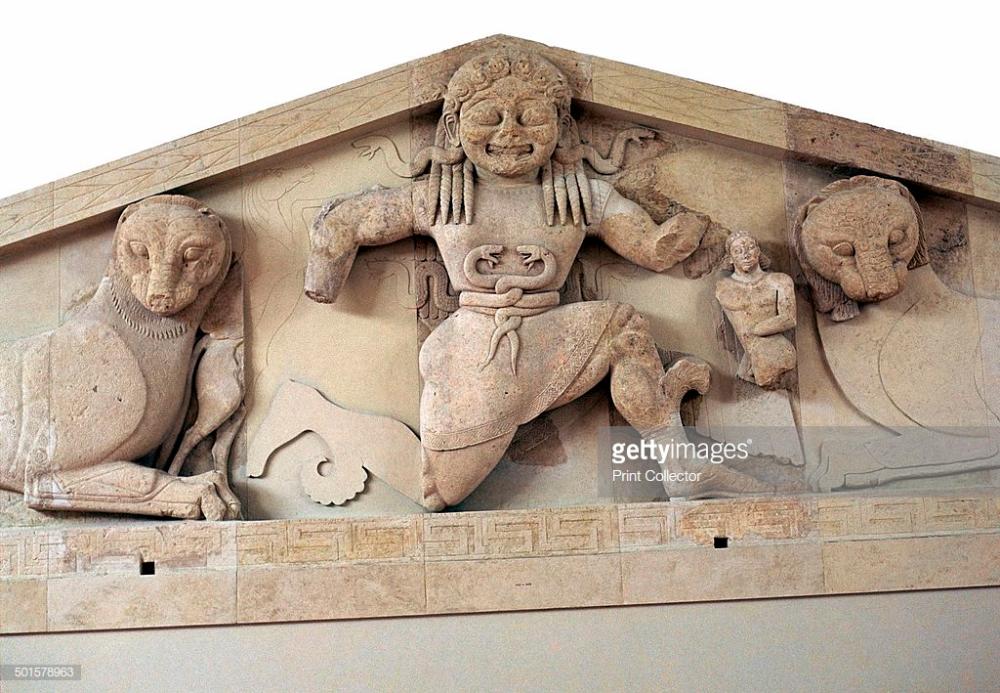
Image 75
Pediment of the temple of Artemis in Corfu with Gorgon and
panthers
Provenance: Corfu (Greece)
Place of conservation:
Corfu Archaeological Museum
Chronology: 580 BCE
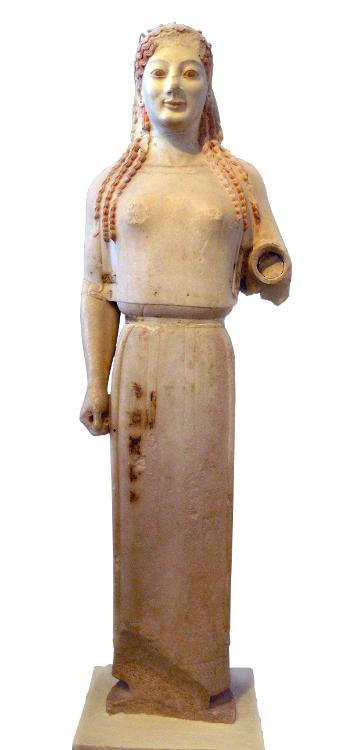
Image 76
The Peplos Kore
Provenance: Athens (Greece)
Place of
conservation: Acropolis Museum (Athens)
Chronology: 530 BCE
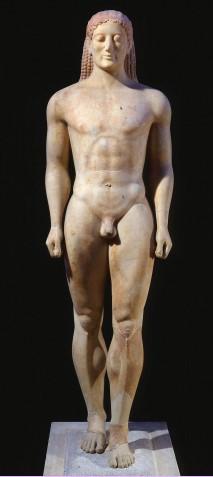
Image 77
The Kroisos Kouros
Provenance: Anavyssos (Greece)
Place of
conservation: National Archaeological Museum (Athens)
Chronology:
540-515 BCE
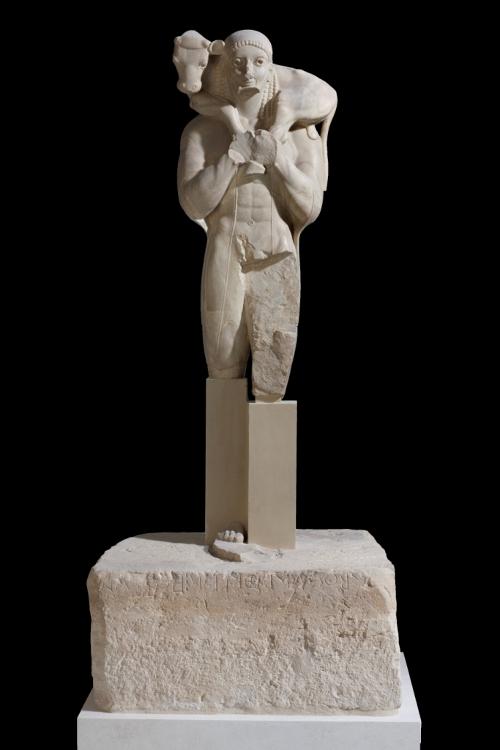
Image 78
Moschophoros
Provenance: Athens (Greece)
Place of
conservation: Acropolis Museum of Athens
Chronology: 560 BCE
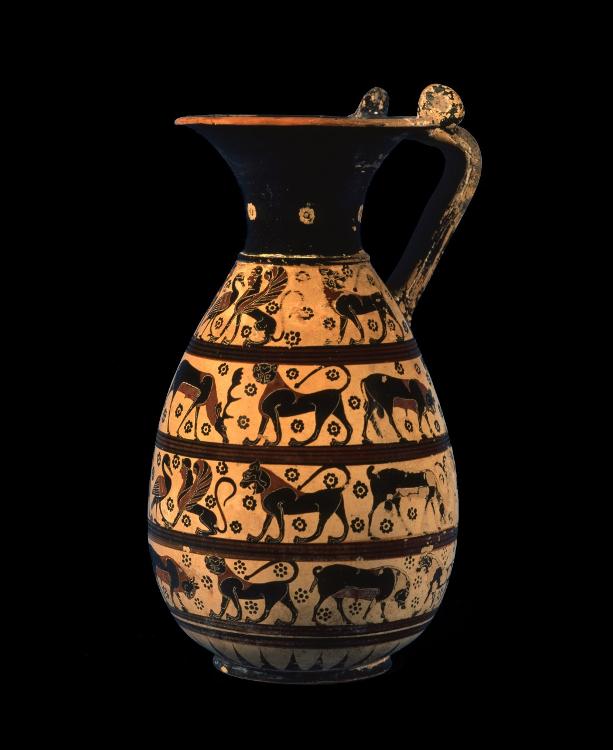
Image 79
Corinthian olpe by the Vatican Painter 73
Provenance: Corinth
(Greece)
Place of conservation: Gregorian Etruscan Museum
(Rome)
Chronology: 630-615 BCE
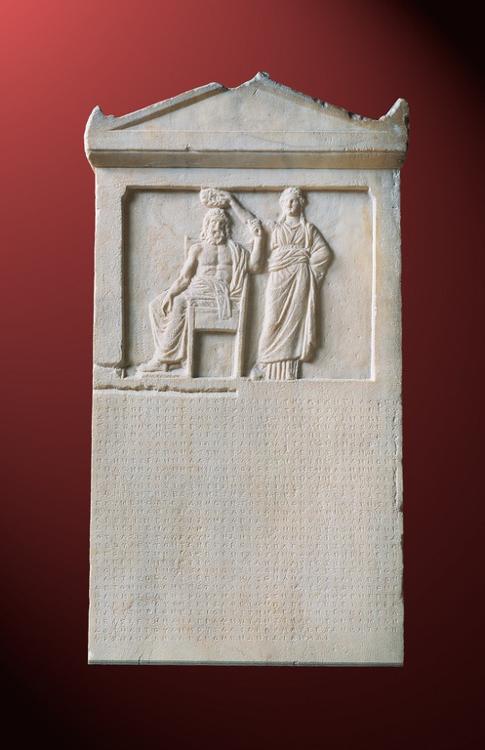
Image 80
Stele with Democracy crowning Demos
Provenance: Athens
(Greece)
Place of conservation: Agora Museum
(Athens)
Chronology: 337 BCE
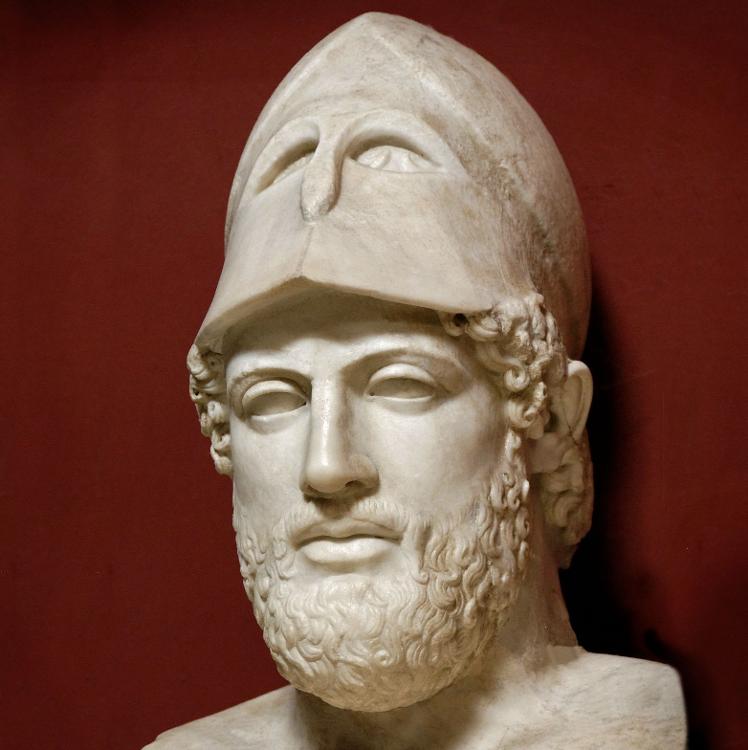
Image 81
Bust of Pericles (ca. 495-429 BCE)
Provenance: Tivoli
(Italy)
Place of conservation: Museo Pio Clementino
(Rome)
Chronology: 2nd cent. CE Roman copy after a Greek original
from 430 BCE
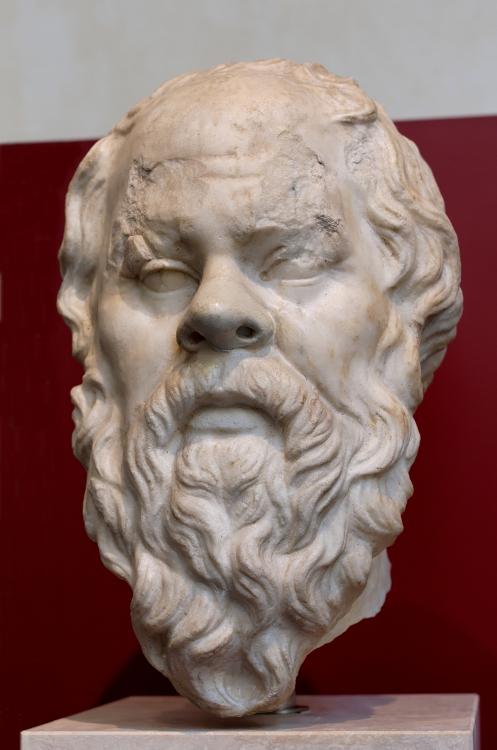
Image 82
Marble head of Socrates (469-399 BCE)
Provenance: Rome
(Italy)
Place of conservation: Palazzo Massimo alle Terme
(Rome)
Chronology: 1st cent. CE (Roman copy)
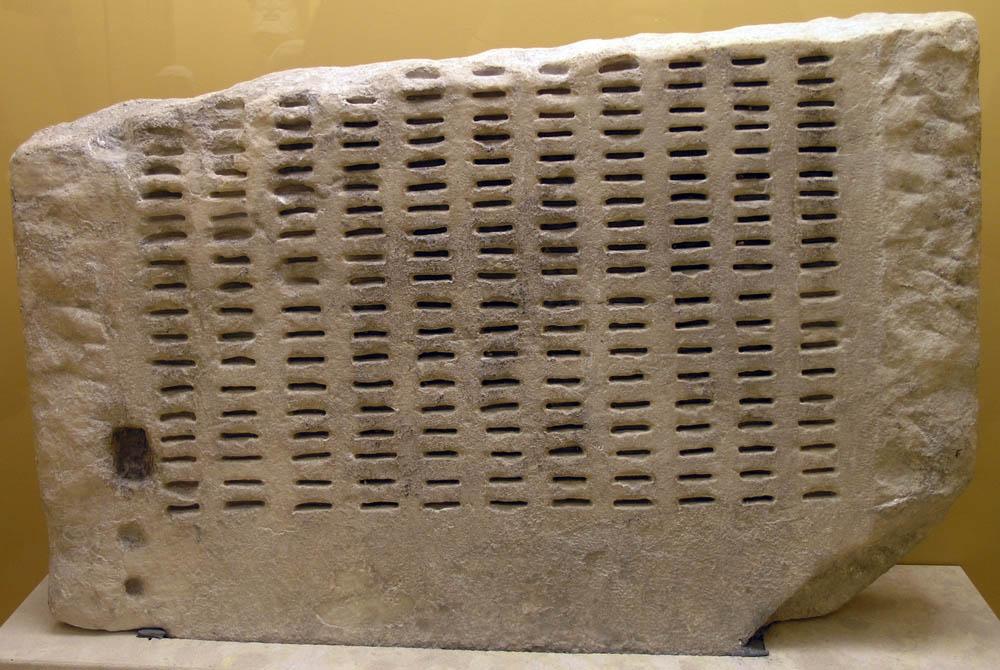
Image 83
The kleroterion
Provenance: Athens (Greece)
Place of
conservation: Agora Museum (Athens)
Chronology: 3rd cent. BCE
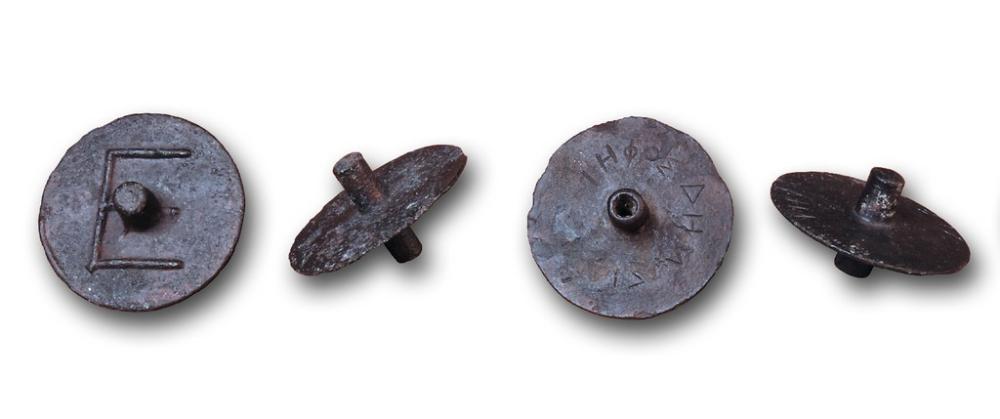
Image 84
Bronze ballots
Provenance: Athens (Greece)
Place of
conservation: Agora Museum (Athens)
Chronology: 4th cent. BCE
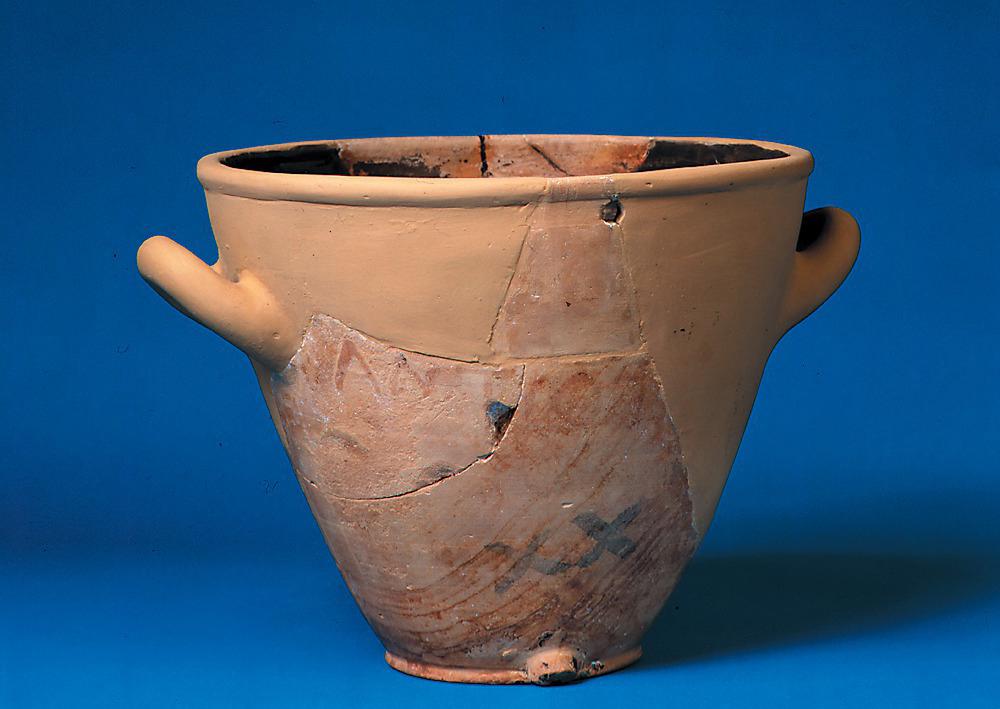
Image 85
Fragmentary waterclock measuring the time allotted to the
speakers
Provenance: Athens (Greece)
Place of conservation:
Agora Museum (Athens)
Chronology: late 5th cent. BCE
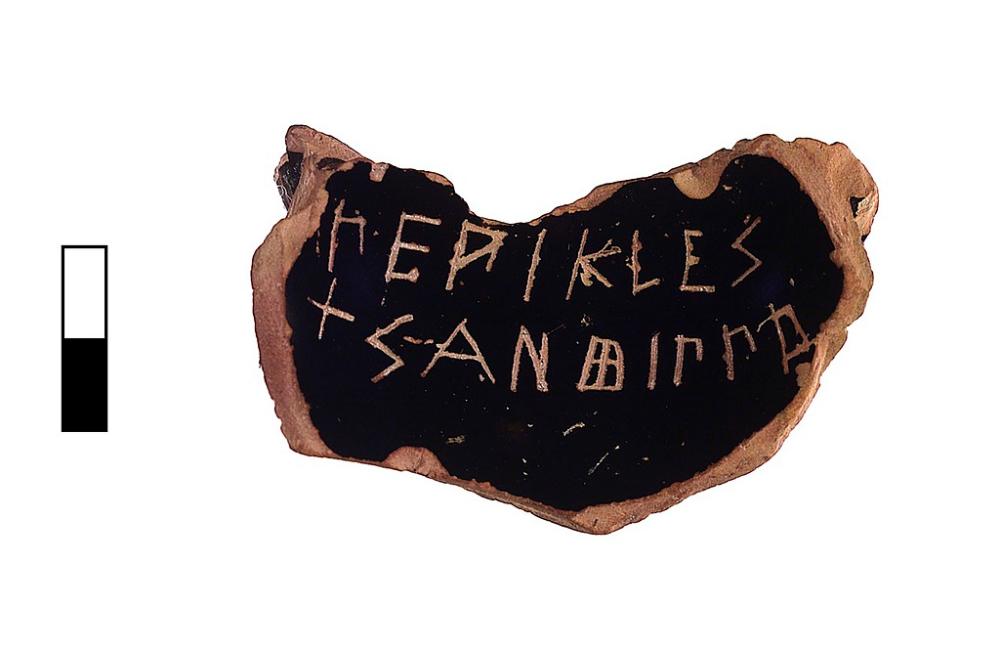
Image 86
Ostrakon with the name of Perikles
Provenance: Athens
(Greece)
Place of conservation: Agora Museum
(Athens)
Chronology: mid-5th cent. BCE
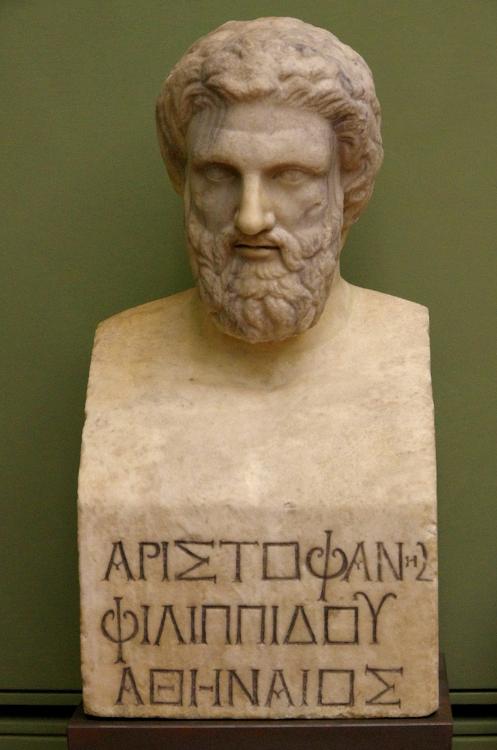
Image 87
Bust of Aristophanes (ca. 450-385 BCE)
Provenance: Tivoli
(Italy)
Place of conservation: Uffizi Gallery
(Florence)
Chronology: 2nd cent. CE Roman copy of a Greek original
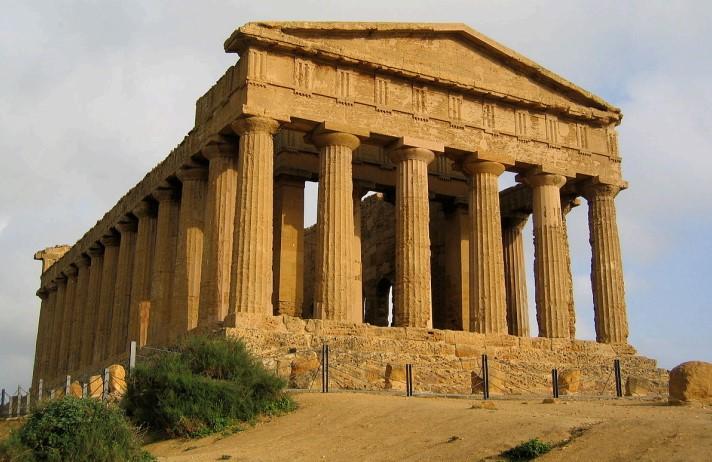
Image 88
Temple of Concordia
Provenance: Agrigento (Italy)
Place of
conservation: In situ
Chronology: 440-430 BCE
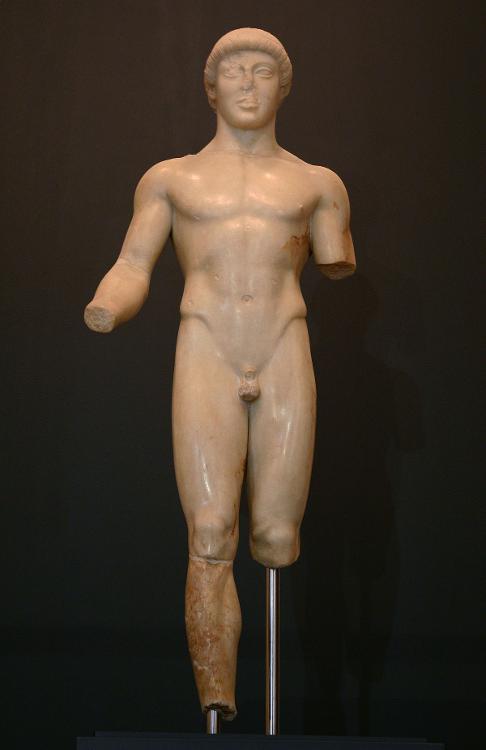
Image 89
Marble statue of ephebe
Provenance: Agrigento (Italy)
Place
of conservation: Museo Archeologico di Agrigento
Chronology: 480 BCE
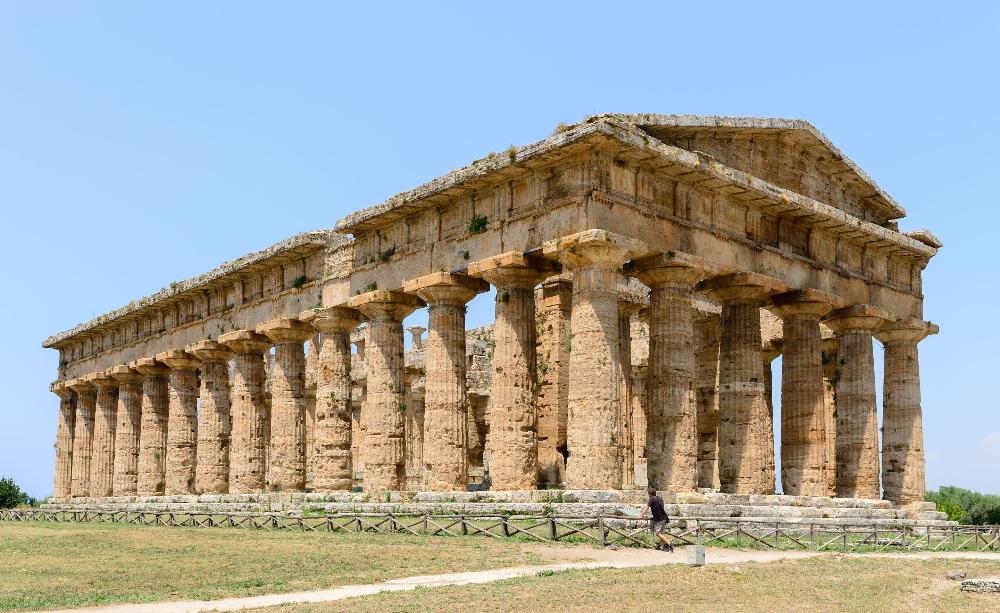
Image 90
Temple of Hera
Provenance: Paestum (Italy)
Place of
conservation: In situ
Chronology: 460-450 BCE
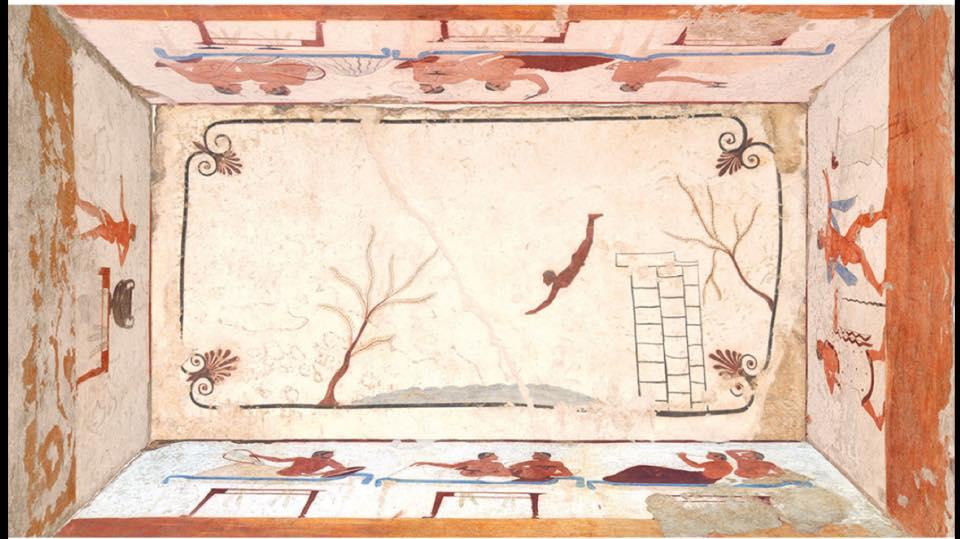
Image 91
Frescoes from the tomb of the Diver
Provenance: Paestum
(Italy)
Place of conservation: Archaeological Museum of
Paestum
Chronology: 480-470 BCE
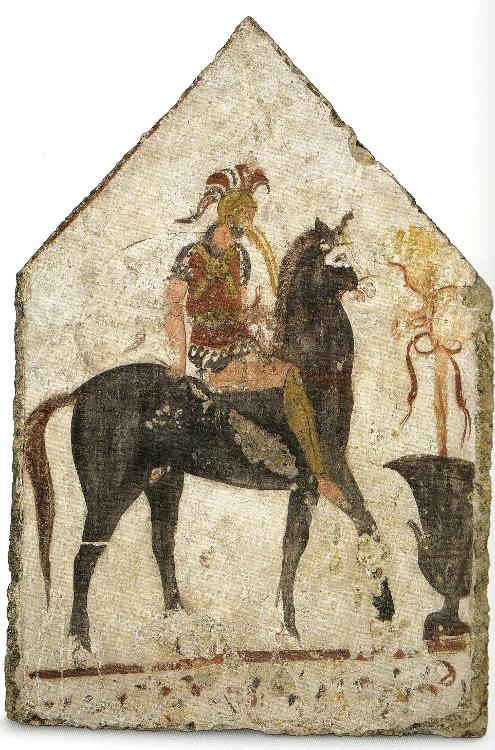
Image 92
Fresco from the Tomb of the Black Rider
Provenance: Paestum
(Italy)
Place of conservation: Archaeological Museum of
Paestum
Chronology: 340 BCE
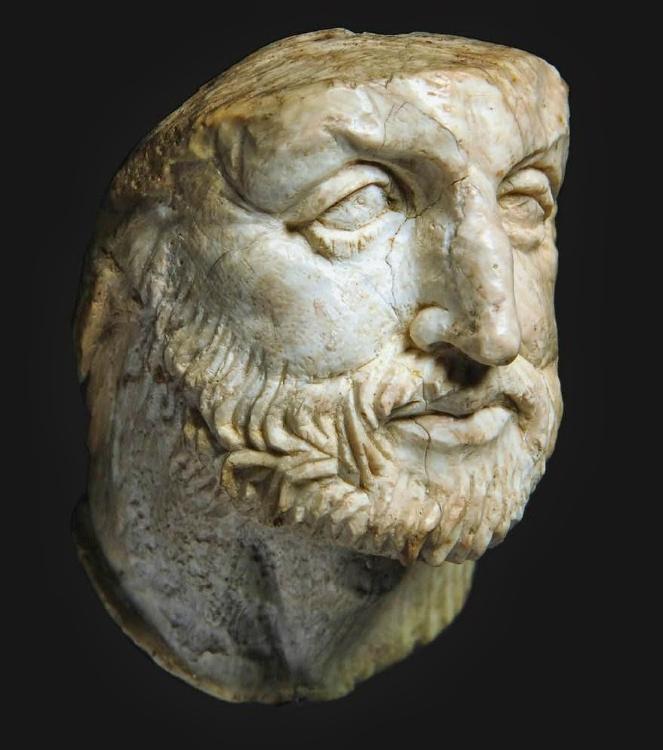
Image 93
Ivory bust of Philip II of Macedonia
Provenance: Vergina
(Greece)
Place of conservation: Vergina Museum
Chronology:
ca. 335 BCE
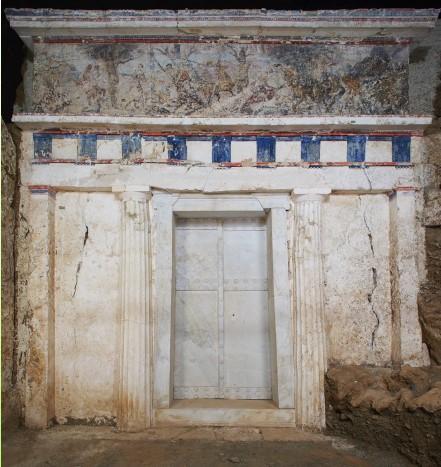
Image 94
Facade and fresco from Tomb II (of Philip II?)
Provenance:
Vergina (Greece)
Place of conservation: In situ
Chronology:
335-315 BCE
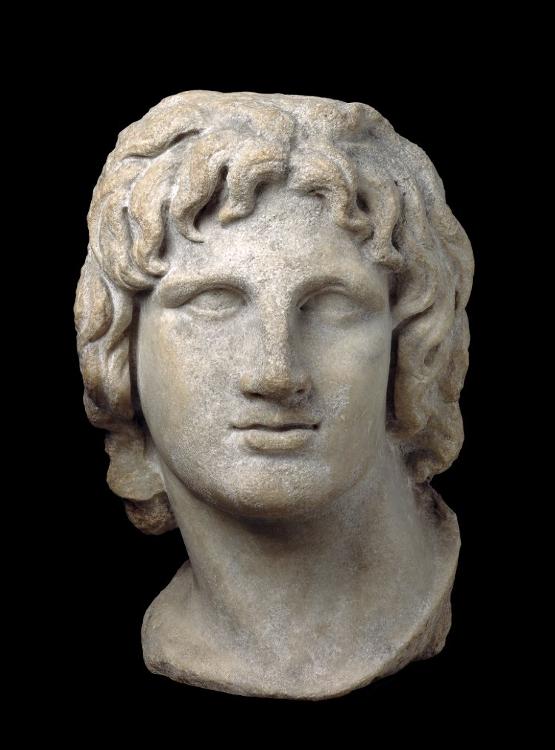
Image 95
Bust of Alexander the Great
Provenance: Alexandria
(Egypt)
Place of conservation: British Museum
(London)
Chronology: 2nd-1st cent. BCE
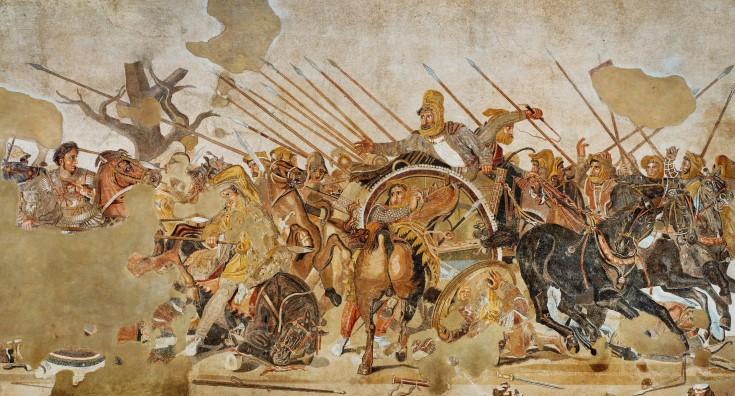
Image 96
The Battle of Issus (333 BCE) between Alexander the Great and Darius
III of Persia
Provenance: House of the Faun, Pompeii
(Italy)
Place of conservation: National Archaeological Museum
(Naples)
Chronology: late 2nd cent. BCE
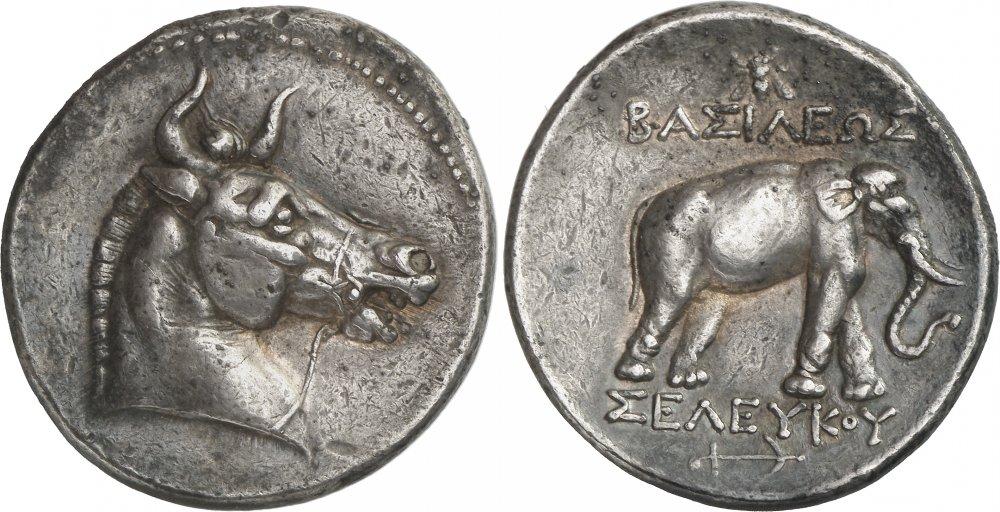
Image 97
Tetradrachm with head of horned horse (Bucephalus?)
Provenance:
Pergamon (Turkey)
Place of conservation: Unknown
Chronology:
reign of Seleucos I Nikator, 312-281 BCE
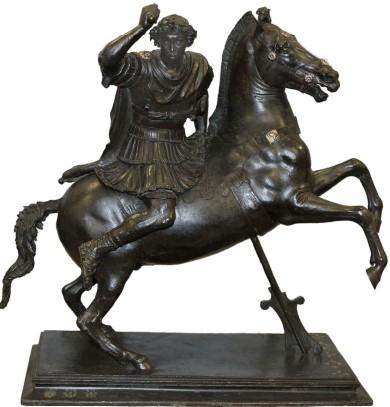
Image 98
Bronze sculpture of Alexander the Great on horseback
Provenance:
Herculaneum (Italy)
Place of conservation: National
Archaeological Museum (Naples)
Chronology: 1st cent. BCE
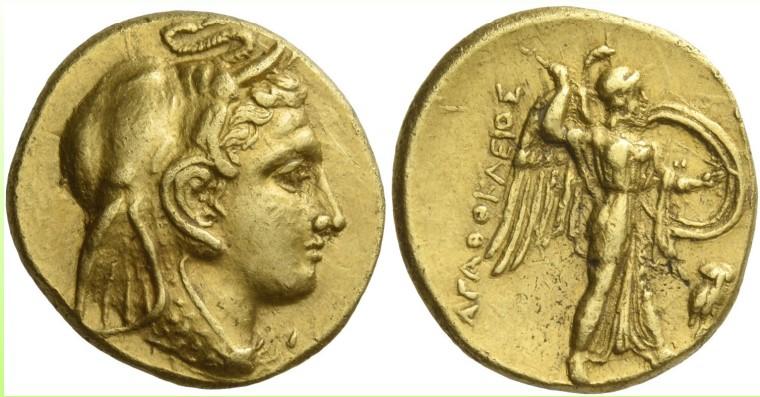
Image 99
Double decadrachm with Agathocles wearing Alexander’s elephant scalp
headdress
Provenance: Syracuse (Italy)
Place of
conservation: Unknown
Chronology: 310-304 BCE
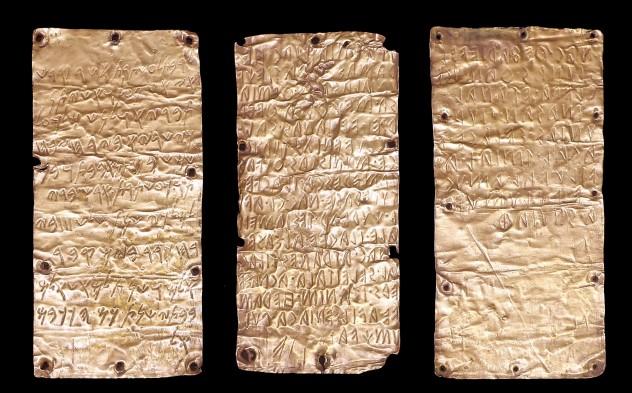
Image 108
The Pyrgi tablets
Provenance: Pyrgi (Italy)
Place of
conservation: National Etruscan Museum (Rome)
Chronology: 500 BCE
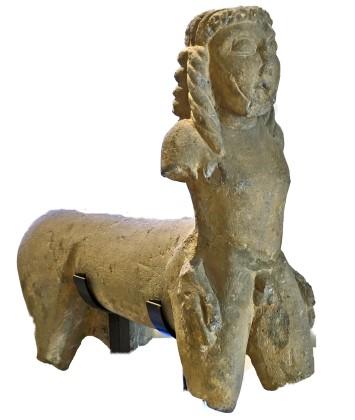
Image 109
Statue of a centaur in tufa stone
Provenance: Vulci
(Italy)
Place of conservation: National Etruscan Museum
(Rome)
Chronology: 590-580 BCE
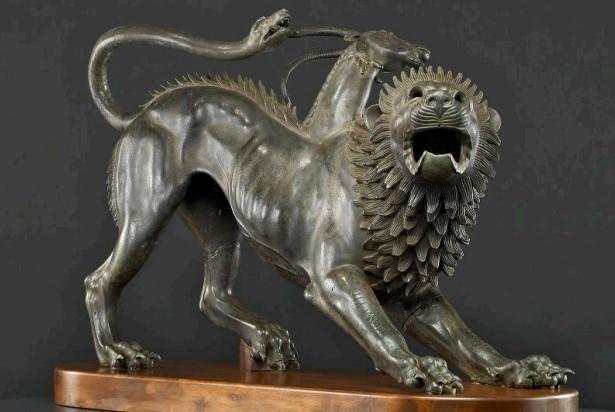
Image 110
Bronze statie of a Chimaera
Provenance: Arezzo
(Italy)
Place of conservation: Archaeological Museum
(Florence)
Chronology: 380-360 BCE
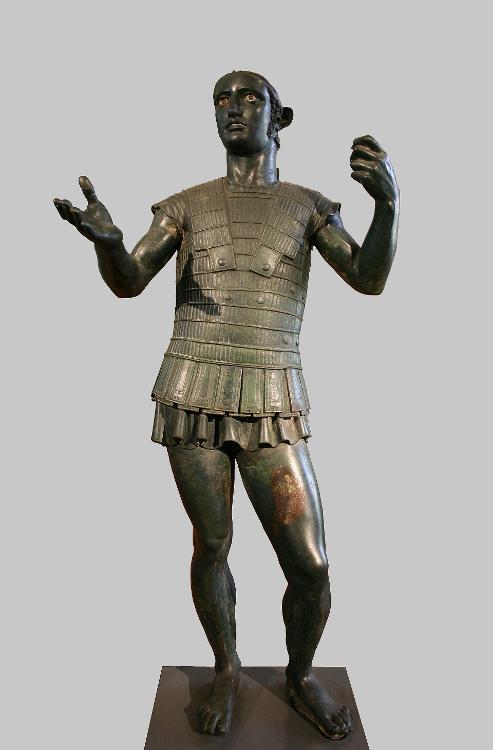
Image 111
“Mars of Todi”
Provenance: Todi (Italy)
Place of
conservation: Museo Etrusco Gregoriano (Rome)
Chronology: late
5th - early 4th cent. BCE
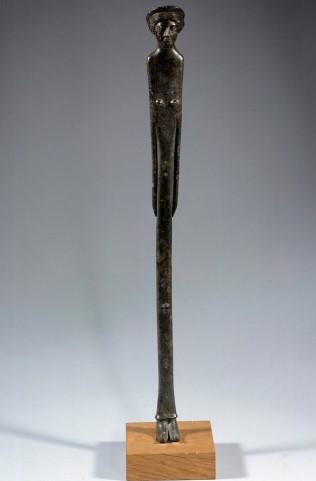
Image 112
Statuette of a woman
Provenance: Nemi (Italy)
Place of
conservation: Louvre (Paris)
Chronology: 350 BCE
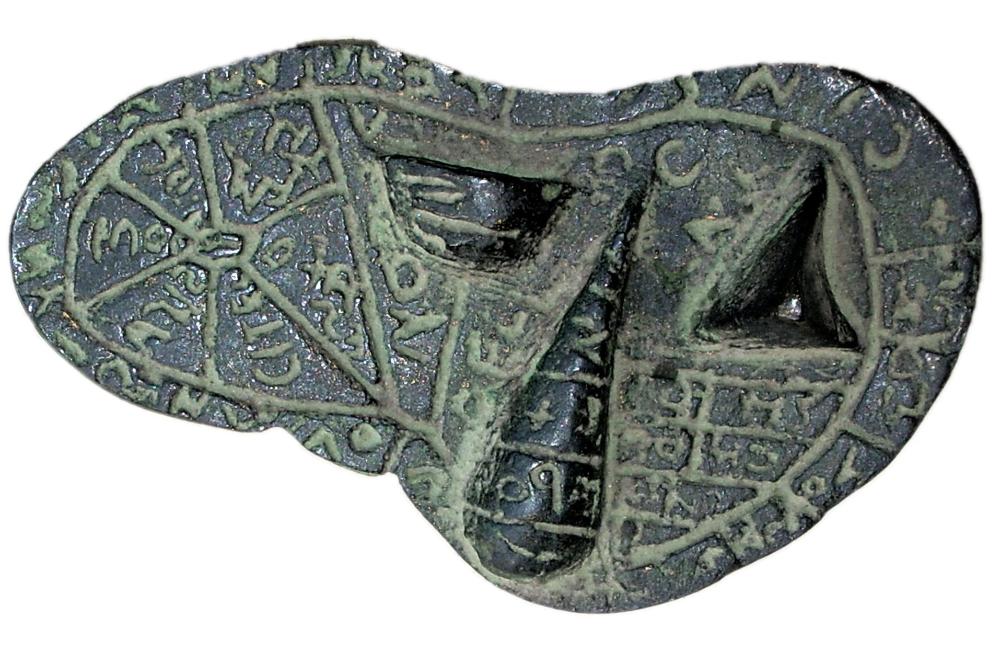
Image 113
Liver of Piacenza
Provenance: Decima di Gossolengo, Piacenza
(Italy)
Place of conservation: Municipal Museum of
Piacenza
Chronology: late 2nd cent. BCE
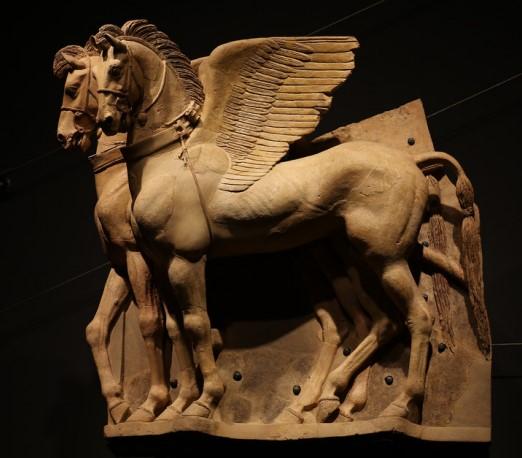
Image 114
Winged-horses of Tarquinia
Provenance: Tarquinia
(Italy)
Place of conservation: Tarquinia National
Museum
Chronology: mid-4th cent. BCE
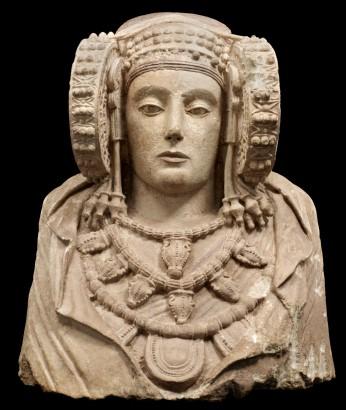
Image 115
The “Lady of Elche”
Provenance: Alcudia de Elche
(Spain)
Place of conservation: National Archaeological Museum
(Madrid)
Chronology: 4th cent. BCE
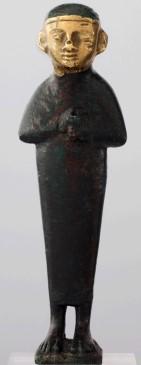
Image 116
Bronze statuette representing a Phoenician divinity with golden
face
Provenance: Cadiz (Spain)
Place of conservation:
Nacional Archaeological Museum (Madrid)
Chronology: 9th-7th cent.
BCE (?)
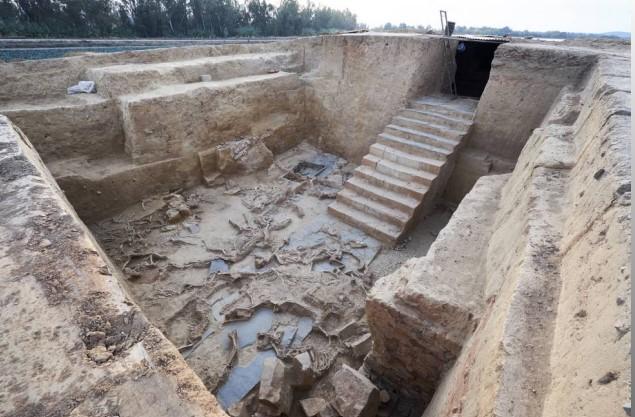
Image 117
The (Tartessian?) sanctuary of Turuñuelo de Guareña
Provenance:
Turuñuelo de Guareña, Badajoz (Spain)
Place of conservation: In
situ
Chronology: 6th-5th cent. BCE
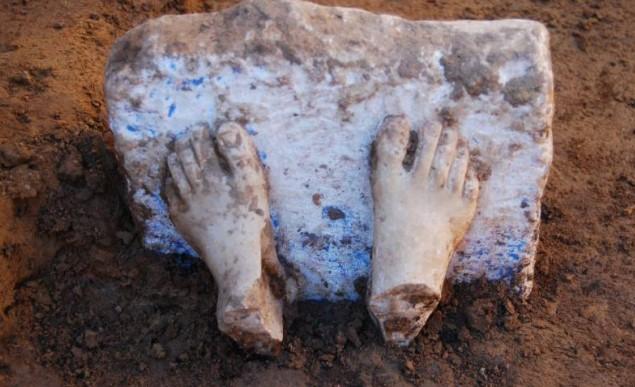
Image 118
Fragment of cycladic marble statue
Provenance: Turuñuelo de
Guareña, Badajoz (Spain)
Place of conservation:
unknown
Chronology: 6th-5th cent. BCE
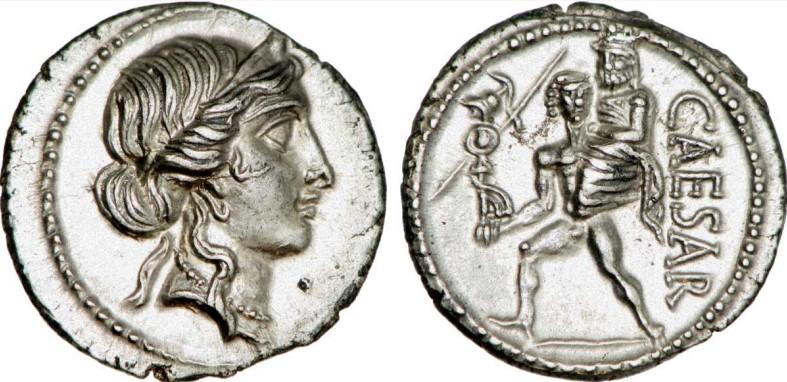
Image 119
Denarius with Venus and Aeneas carrying Anchises and
Palladium
Provenance: North Africa
Place of conservation:
unknown
Chronology: 47-46 BCE
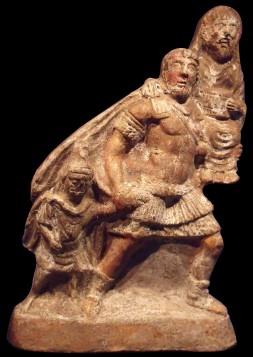
Image 120
Terracotta representing Aeneas escaping from Troy with his father
Anchises and his son Aeneas
Provenance: Pompeii
(Italy)
Place of conservation: National Archaeological Museum
(Naples)
Chronology: 1st cent. CE
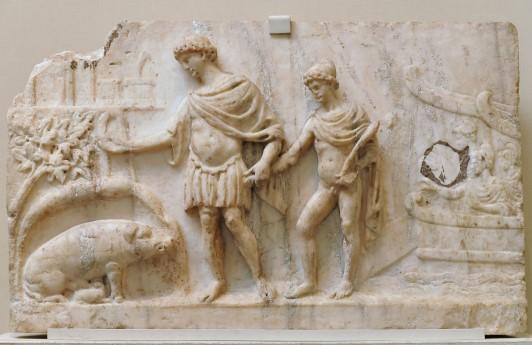
Image 121
Marble relief with Aeneas landing in Latium with Ascanius and meeting
a sow identifying the place where to found Lavinium
Provenance:
Rome (Italy)
Place of conservation: British Museum
(London)
Chronology: 140-150 CE
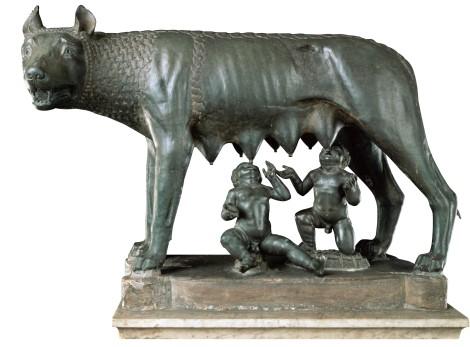
Image 122
The “Capitoline Wolf”
Provenance: unknown
Place of
conservation: Palazzo dei Conservatori (Rome)
Chronology: 5th
cent. BCE or 11th-12th cent CE (and late 15th cent.)?
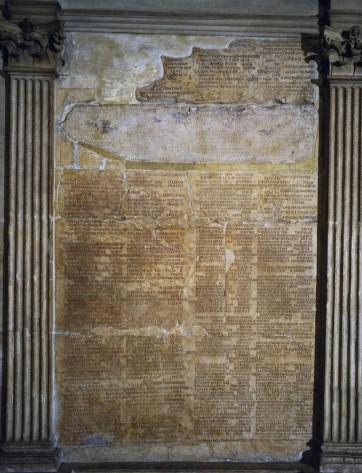
Image 123
Consular and triumphal Fasti
Provenance: Forum Romanum, Rome
(Italy)
Place of conservation: Capitoline Museums
(Rome)
Chronology: 27 BCE - 14 CE
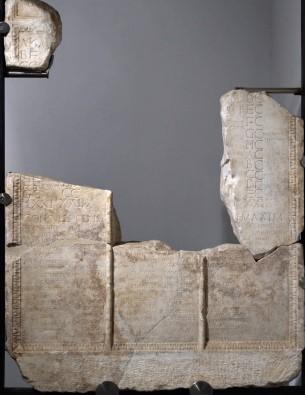
Image 124
Fasti and Calendar
Provenance: Rome (Italy)
Place of
conservation: Roman National Museum, Baths of Diocletian
(Rome)
Chronology: 3rd cent. CE
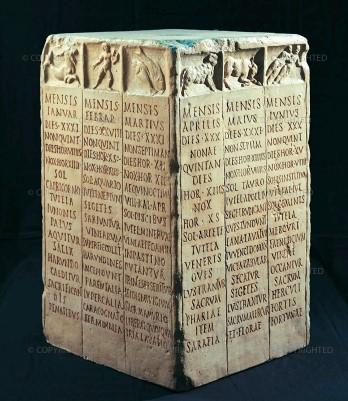
Image 125
Rustic calendar
Provenance: Campus Marzius, Rome
(Italy)
Place of conservation: Museum of Roman Civilization in
Rome
Chronology: 2nd cent. CE
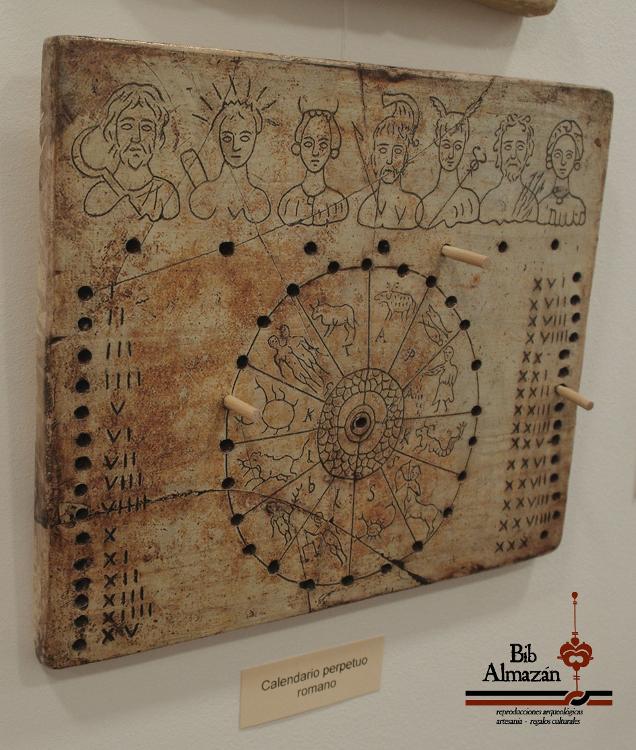
Image 126
Calendar with removable pins
Provenance: Rome (Italy)
Place
of conservation: unknown
Chronology: 3rd-4th cent. CE
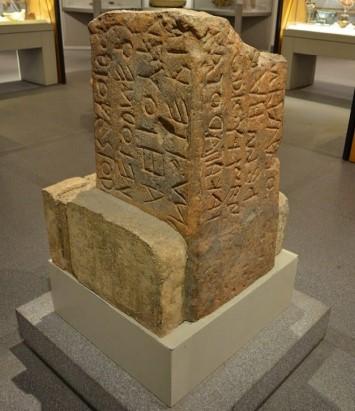
Image 127
The “Lapis Niger”
Provenance: Forum Romanum, Rome
(Italy)
Place of conservation: National Roman Museum - Terme di
Diocleziano (Rome)
Chronology: 570-550 BCE
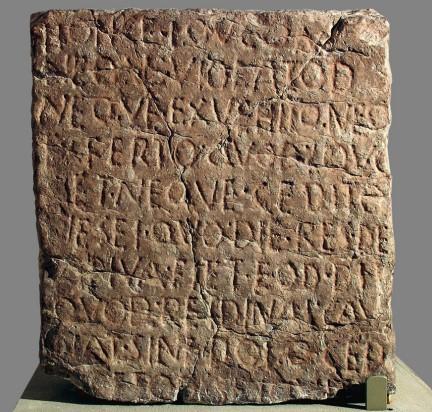
Image 128
The “Lex Spoletina”
Provenance: Spoleto (Italy)
Place of
conservation: National Archaeological Museum
(Spoleto)
Chronology: ca. 241 BCE
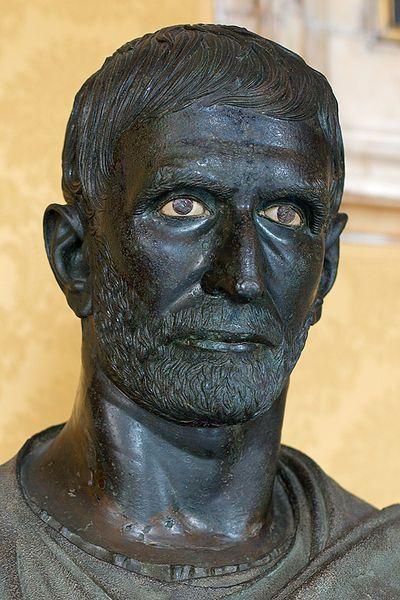
Image 129
“Capitoline Brutus” (portrait of Lucius Iunius
Brutus?)
Provenance: Italy
Place of conservation: Capitoline
Museums (Rome)
Chronology: early 3rd cent. BCE
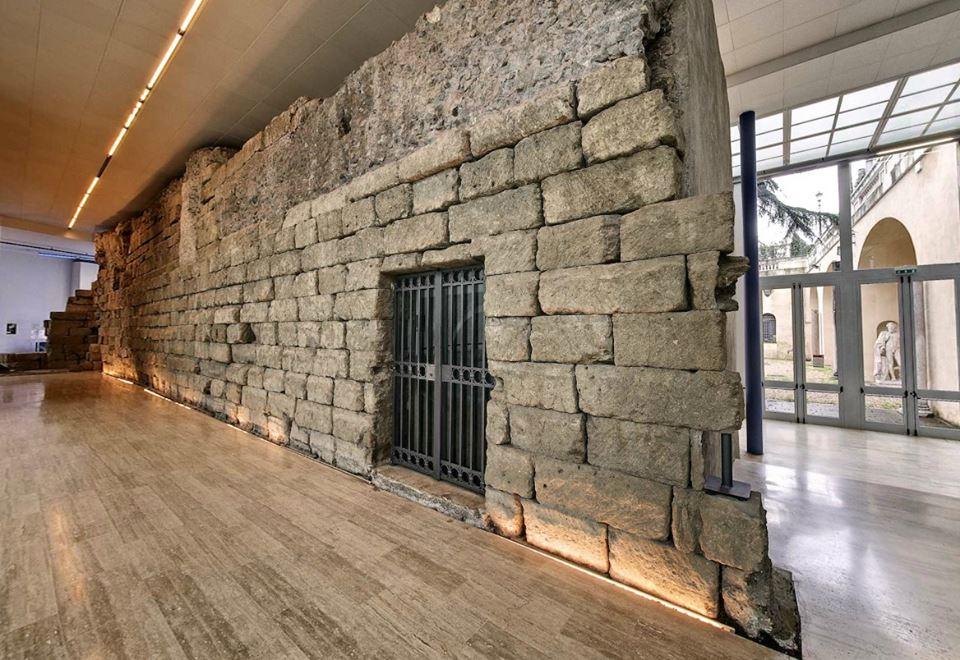
Image 130
Ruins of the Capitolium of Rome
Provenance: Rome
(Italy)
Place of conservation: In situ
Chronology: 509 BCE
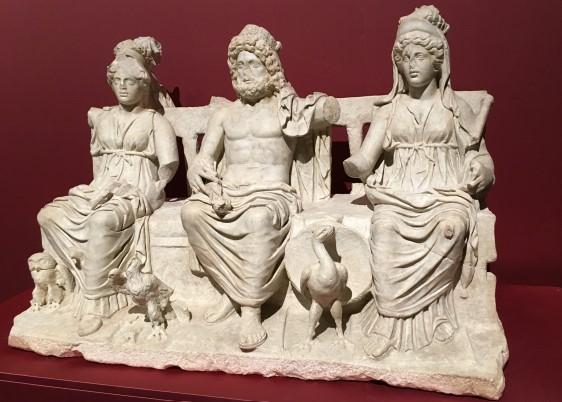
Image 131
The Capitoline triad
Provenance: Guidonia (Italy)
Place of
conservation: Civic Archaeological Museum (Guidonia)
Chronology:
160-180 CE BCE
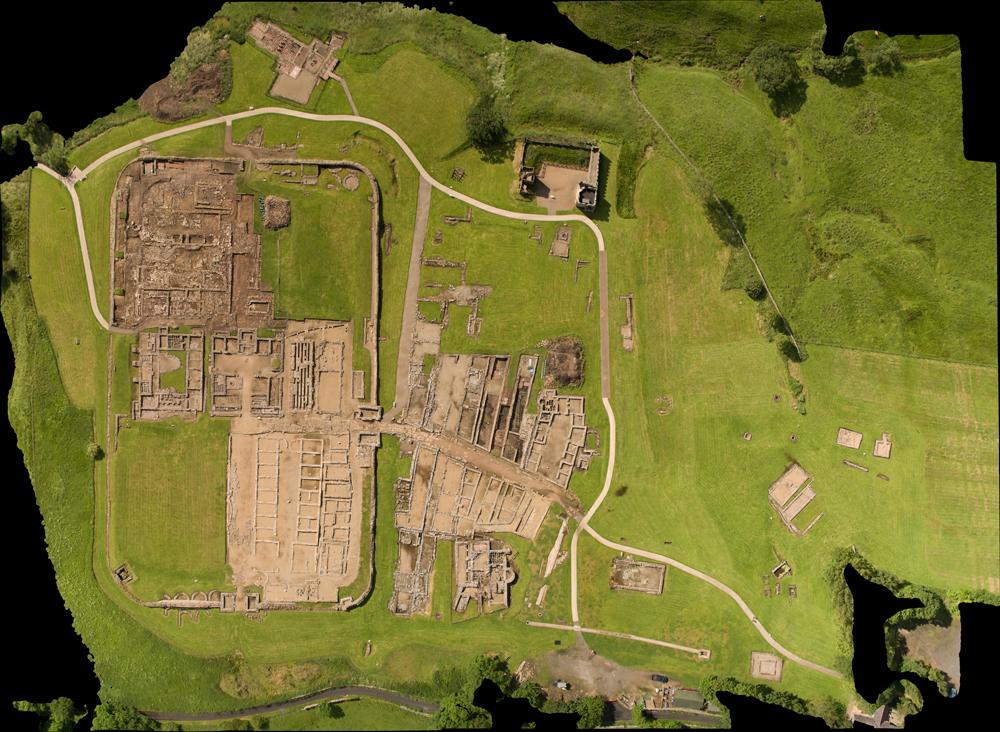
Image 132
The castrum of Vindolanda
Provenance: Bardon Mill
(UK)
Place of conservation: In situ
Chronology: 85 CE
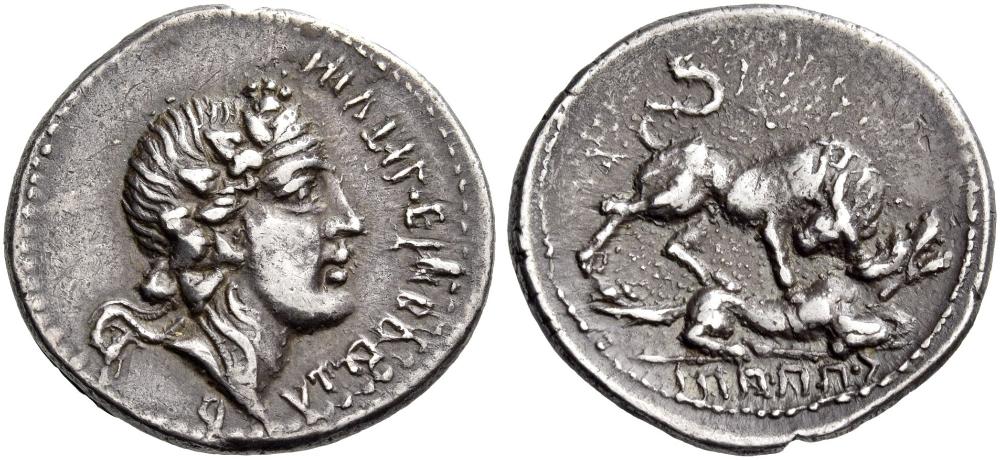
Image 133
Silver denarius with the Italic bull trampling on the Roman
She-wolf
Provenance: Corfinium? (Italy)
Place of
conservation: unknown
Chronology: 90-88 BCE
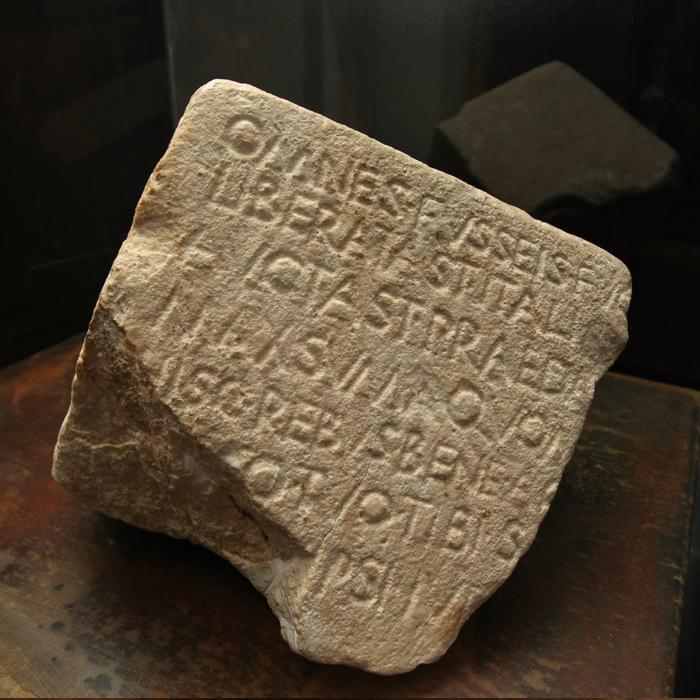
Image 134
The “Cittareale stone”
Provenance: Cittareale (Italy)
Place
of conservation: Museum of Cittareale (Rieti)
Chronology: 90-88 BCE
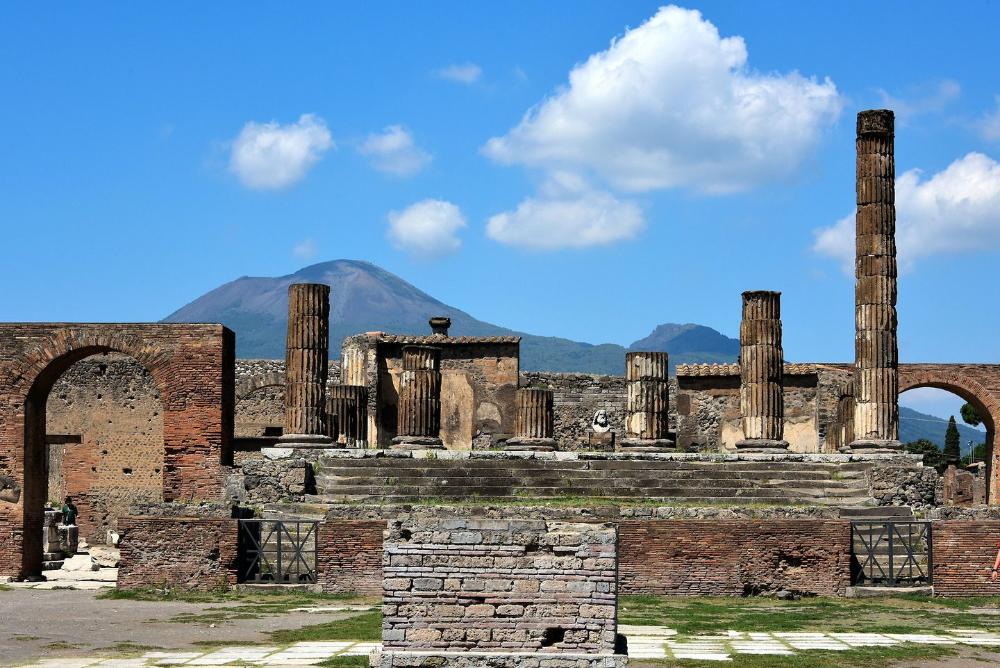
Image 135
The Capitolium of Pompeii
Provenance: Pompeii (Italy)
Place
of conservation: In situ
Chronology: 200-175 BCE
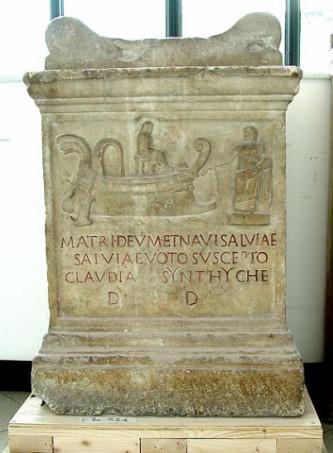
Image 136
The altar of Claudia Syntyche
Provenance: Rome
(Italy)
Place of conservation: Central Montemartini
(Rome)
Chronology: 1st cent. CE
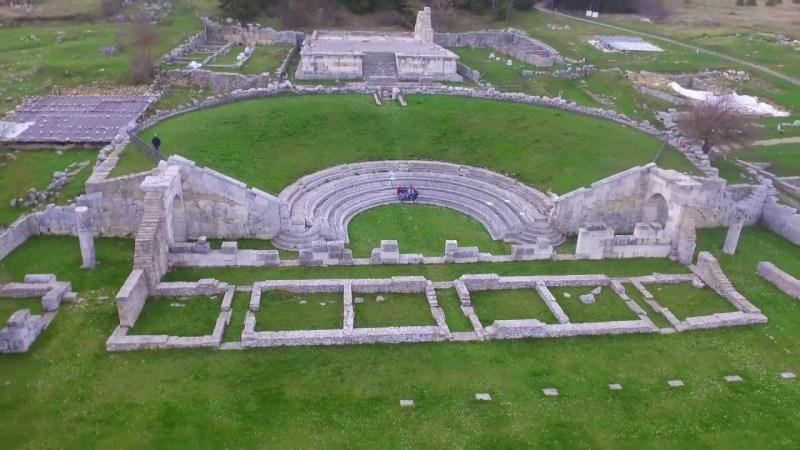
Image 137
The sanctuary of Pietrabbondante
Provenance: Pietrabbondante
(Italy)
Place of conservation: In situ
Chronology: end of
the 2nd cent. BCE
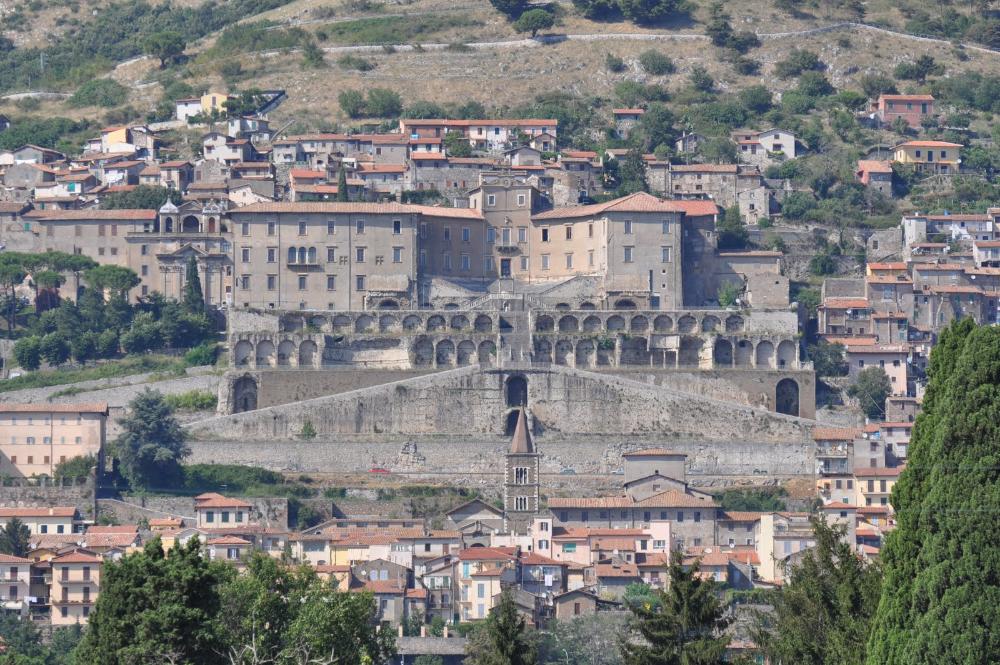
Image 138
The sanctuary of Fortuna Primigenia
Provenance: Palestrina
(Italy)
Place of conservation: In situ
Chronology: end of
the 2nd cent. BCE
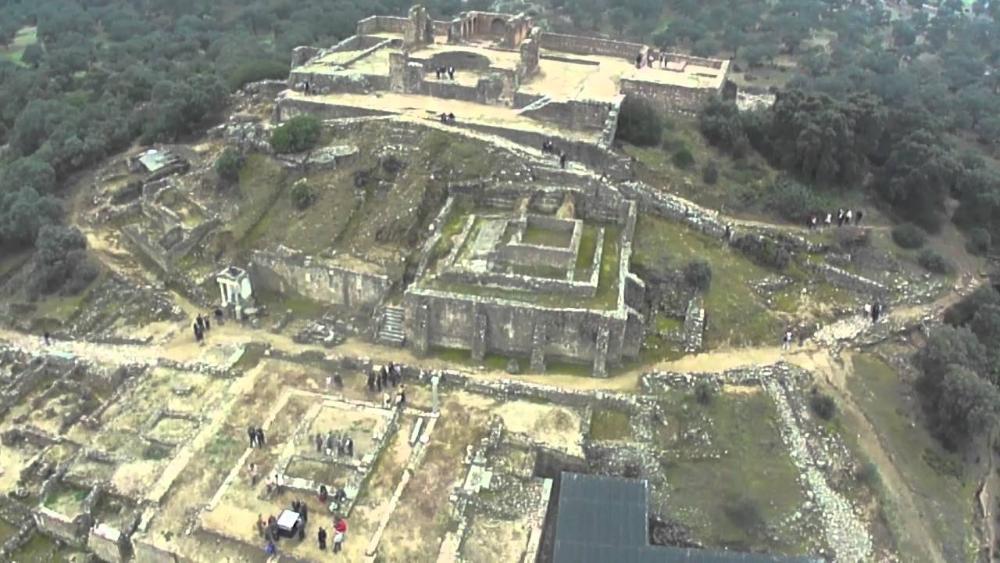
Image 139
The Roman sanctuary of Munigua
Provenance: Munigua, Seville
(Spain)
Place of conservation: In situ
Chronology: end of
the 1st cent. CE
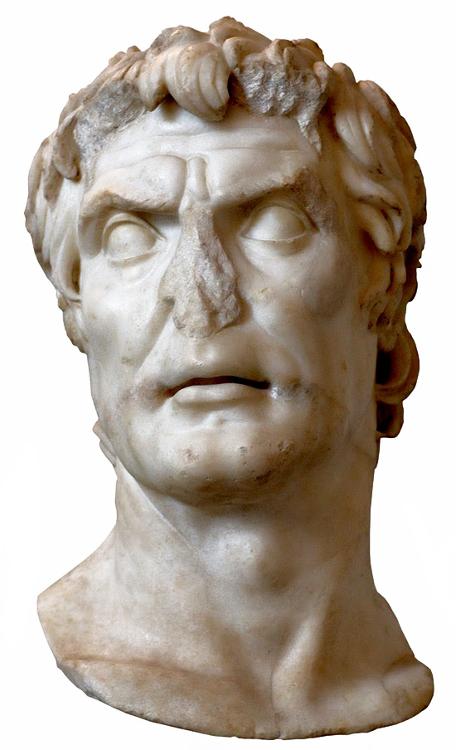
Image 140
Bust of Lucius Cornelius Sulla (?)
Provenance: Rome
(Italy)
Place of conservation: Glyptothek of
Munich
Chronology: Augustan epoch
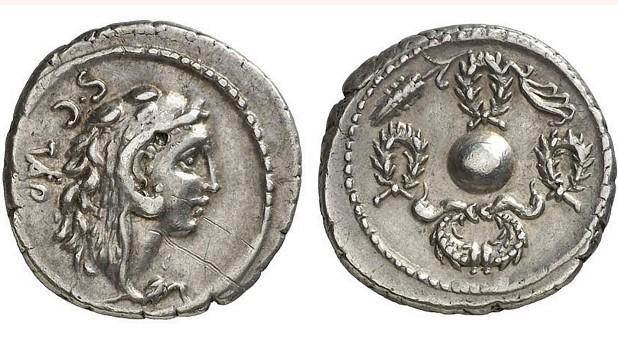
Image 141
Denarius with Hercules and a globe surrounded by four wreaths, one
flanked by aplustre and grain ear
Provenance: Rome
(Italy)
Place of conservation: unknown
Chronology: 56 BCE
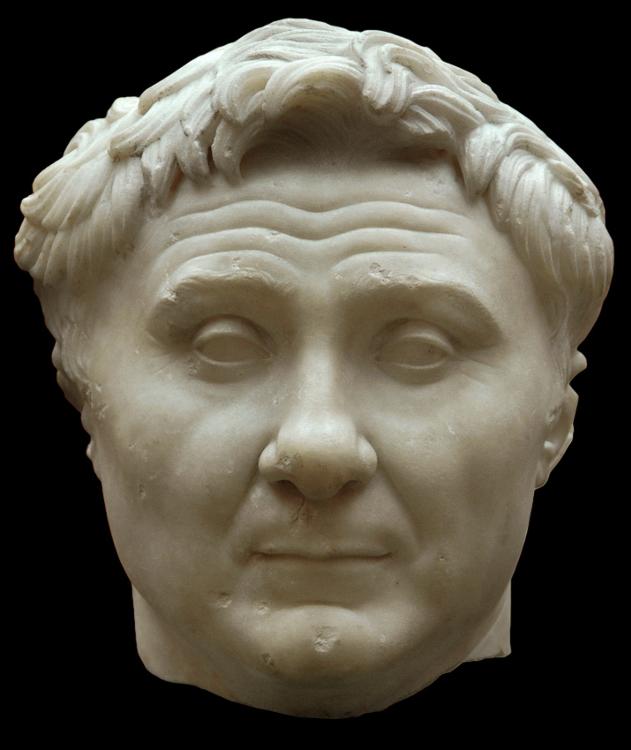
Image 142
Bust of Gnaeus Pompeius Magnus
Provenance: Rome
(Italy)
Place of conservation: Ny Carlsberg Glyptotek
(Copenhagen)
Chronology: 30-50 CE
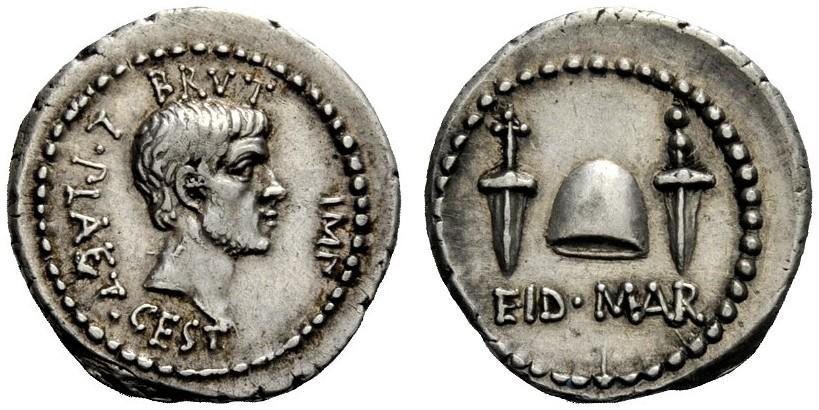
Image 143
Silver denarius advertising Brutus in conjunction with symbols
justifying Caesar’s
assassination
Provenance: Northern
Greece
Place of conservation: unknown
Chronology: 44 BCE
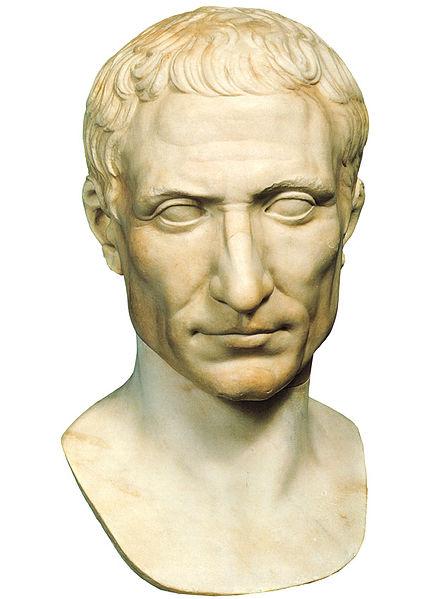
Image 144
Marble portrait of Caius Julius Caesar (the “Chiaramonti
Caesar”)
Provenance: unknown
Place of conservation: Vatican
Museums (Rome)
Chronology: 30-20 BCE
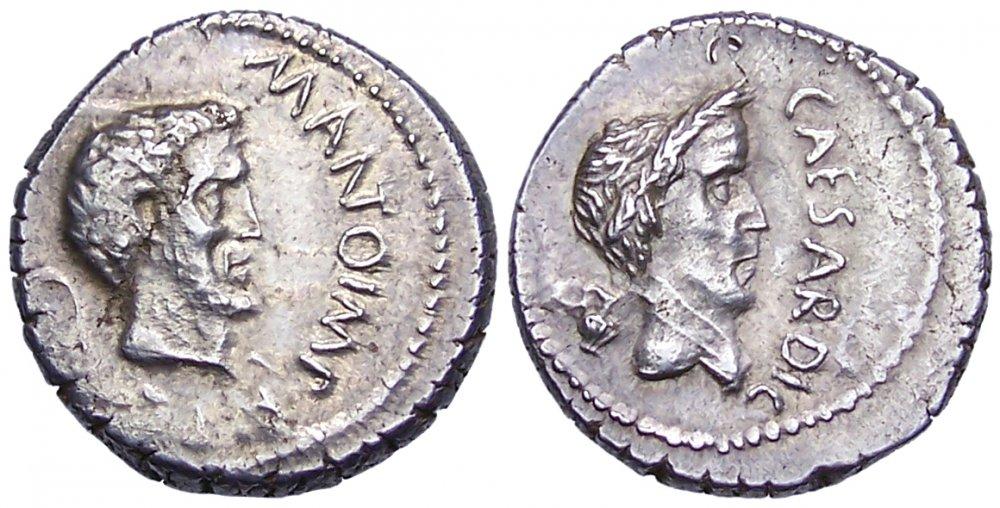
Image 145
Silver denarius with Mark Antony and Caesar
Provenance:
Cisalpine Gaul
Place of conservation: unknown
Chronology: 43 BCE
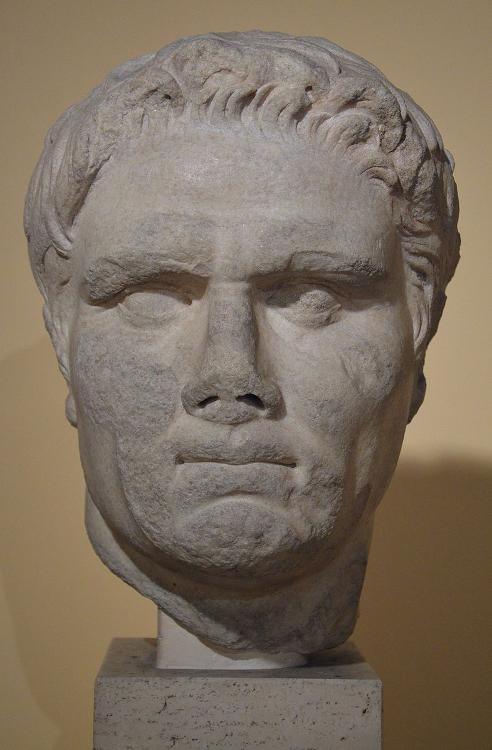
Image 146
Portrait of Marcus Antonius (?)
Provenance: Forum Romanum, Rome
(Italy)
Place of conservation: Centrale Montemartini
(Rome)
Chronology: ca. 35 BCE
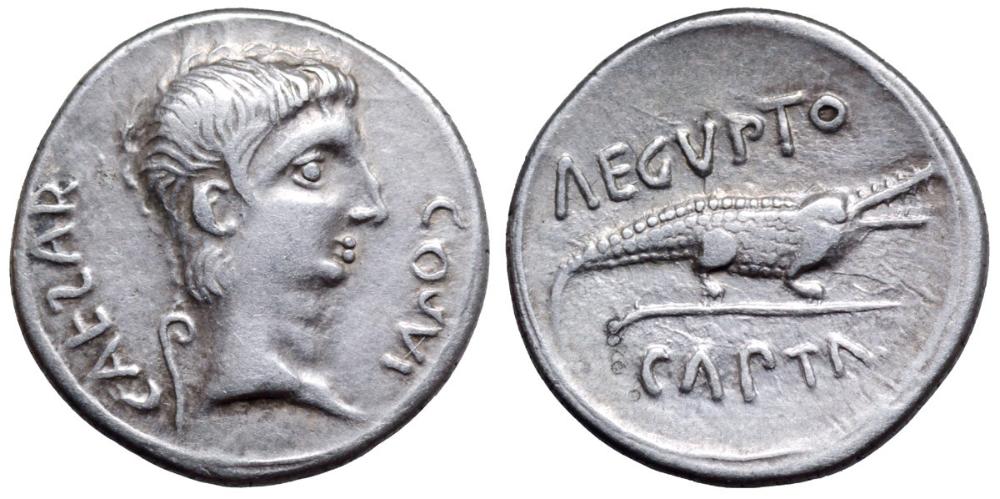
Image 147
Silver denarius with Octavian’s head and crocodile
Provenance:
unknown
Place of conservation: unknown
Chronology: 28 BCE
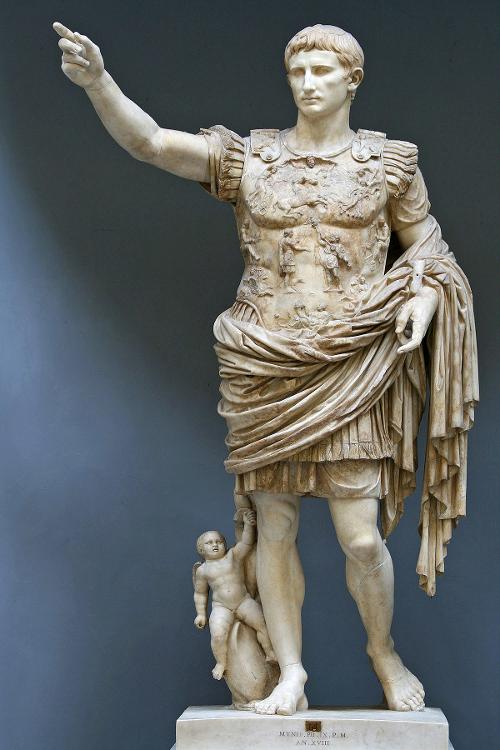
Image 148
Augustus of Prima Porta
Provenance: Prima Porta, Rome
(Italy)
Place of conservation: Vatican Museums
(Rome)
Chronology: ca. 20 CE
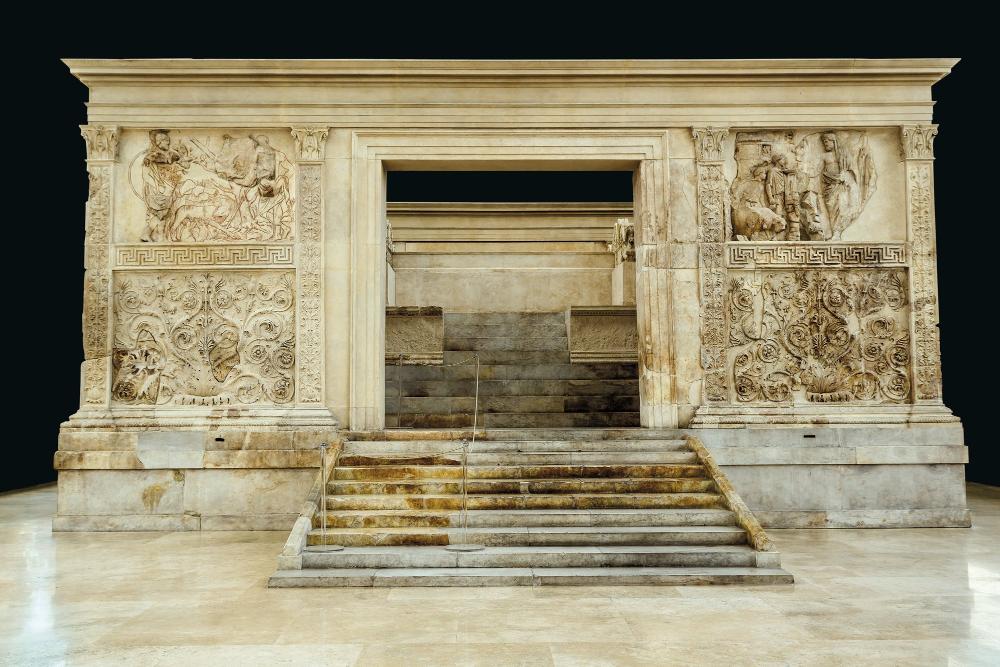
Image 149
Ara Pacis Augustae
Provenance: Rome (Italy)
Place of
conservation: Museum of the Ara Pacis (Rome, Italy)
Chronology: 9 BCE
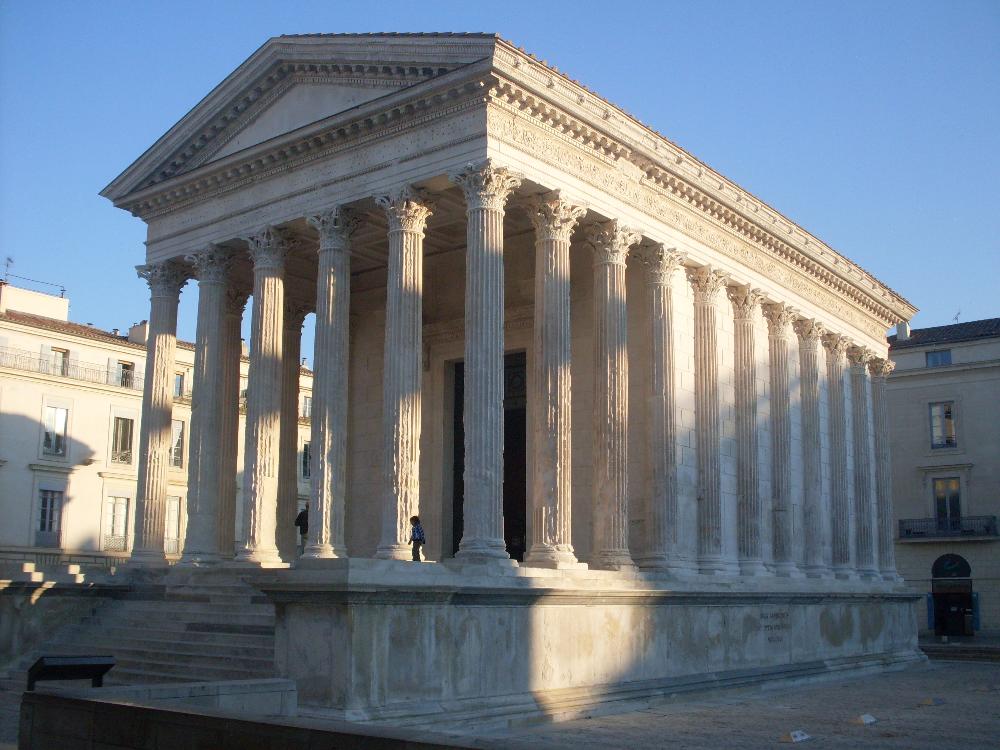
Image 150
Maison Carrée
Provenance: Nîmes (France)
Place of
conservation: in situ
Chronology: 1st century CE
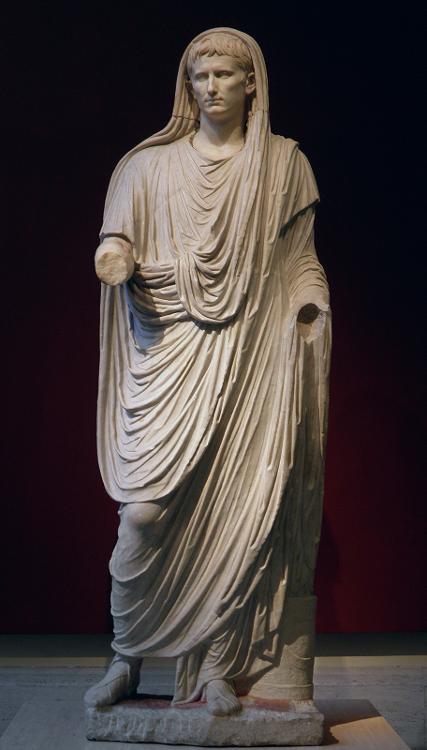
Image 151
Augustus as Pontifex Maximus
Provenance: Via Labicana, Rome
(Italy)
Place of conservation: Palazzo Massimo alle Terme,
National Museum of Rome (Rome, Italy).
Chronology: ca. 20 CE
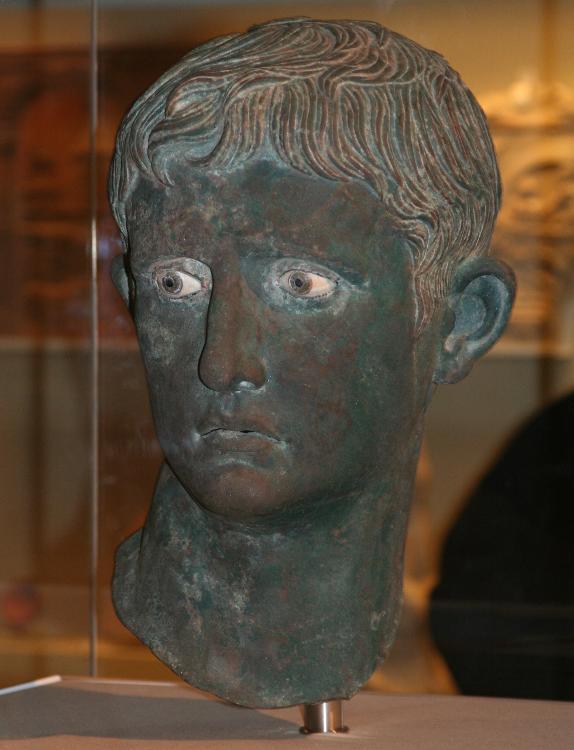
Image 152
Meroë Head
Provenance: Meroë (Shendi, Sudan)
Place of
conservation: British Museum (London)
Chronology: 27-25 BCE
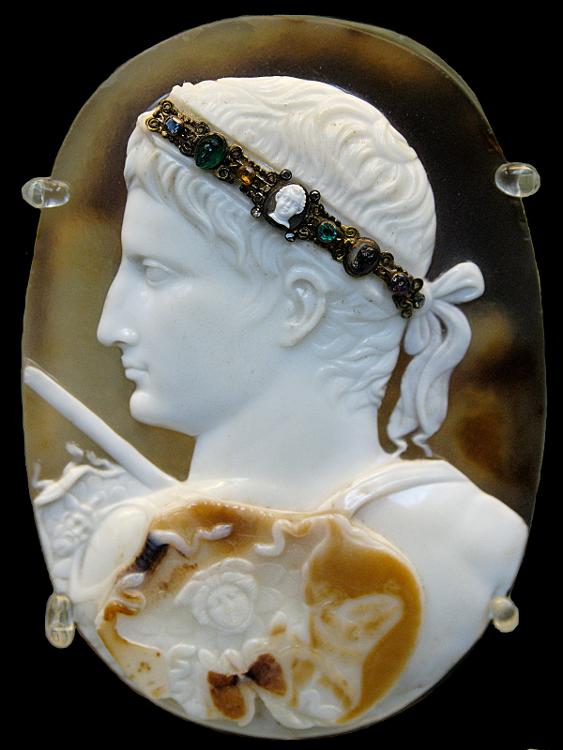
Image 153
Blacas Cameo
Provenance: Unknown
Place of conservation:
British Museum (London)
Chronology: 14-20 CE
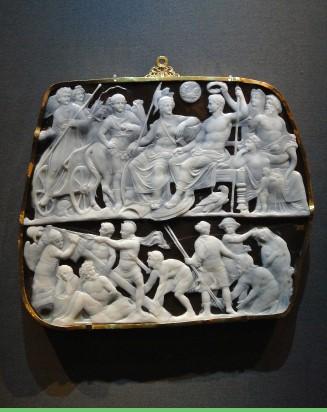
Image 154
Gemma Augustea
Provenance: Unknown
Place of conservation:
Kunsthistorisches Museum (Vienna, Austria)
Chronology: 9-12 CE
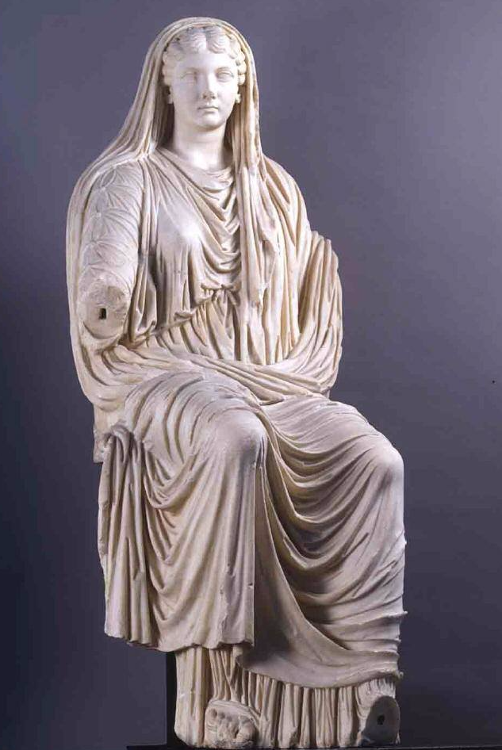
Image 155
Marble statue of Livia Drusilla (wife of Augustus)
Provenance:
Paestum (Salerno, Italy)
Place of conservation: National
Archaeological Museum (Madrid, Spain)
Chronology: early 1st
century CE
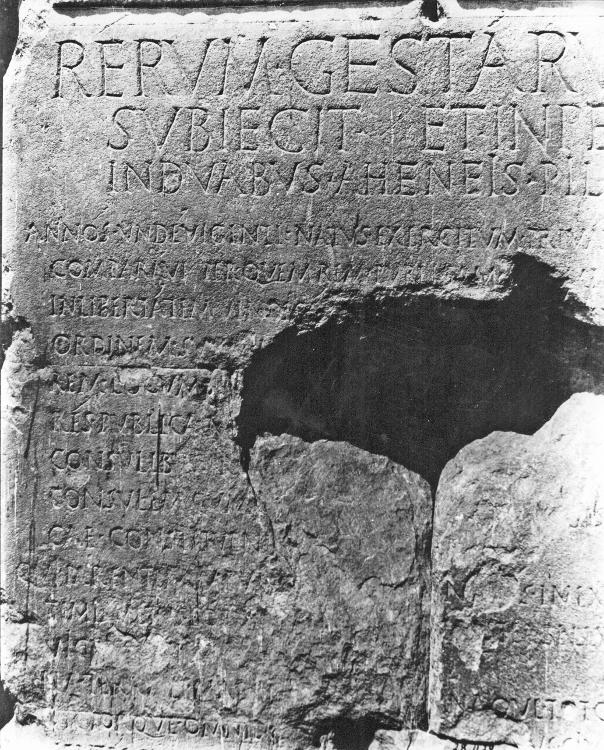
Image 156
Res Gestae Divi Augusti on the temple of Augustus and Rome at Ankara
(Monumentum Ancyrarum). Fragment.
Provenance: Ankara
(Turkey)
Place of conservation: in situ
Chronology: ca. 14 CE
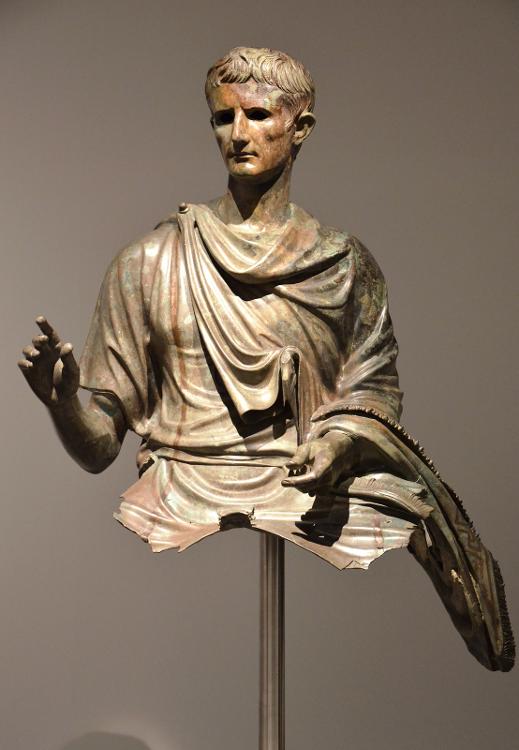
Image 157
Equestrian statue of Augustus
Provenance: Aegean Sea (Greece)
Place of conservation: National
Archaeological Museum of Athens (Athens, Greece)
Chronology: late
1st century BCE
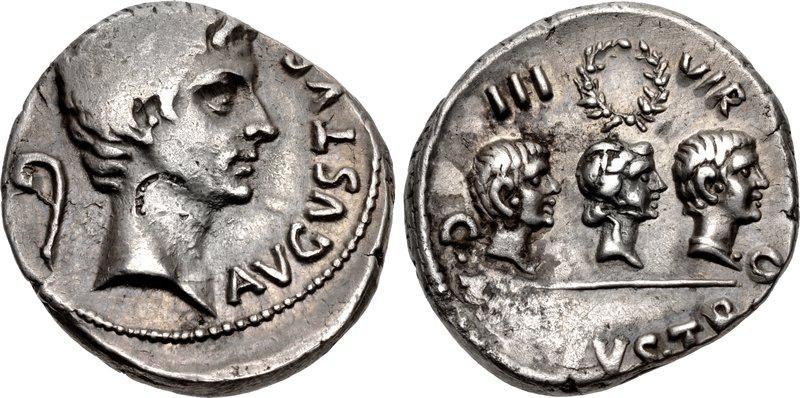
Image 158
Denarius with Augustus, his daughter Julia the Elder, and her sons
Lucius and Gaius Caesar
Provenance: Rome (Italy)
Place of
conservation: Private collection
Chronology: 13 BCE
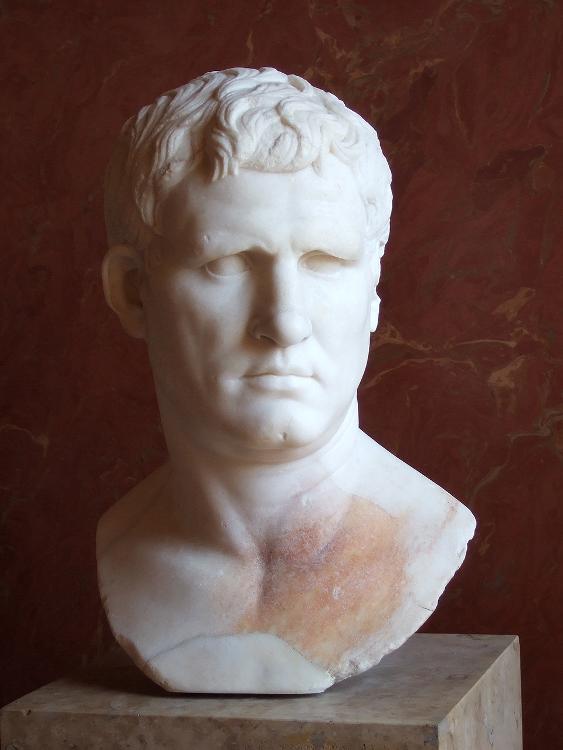
Image 159
Bust of Marcus Vipsanius Agrippa
Provenance: Forum of Gabii
(Italy)
Place of conservation: Louvre Museum (Paris,
France)
Chronology: ca. 25-24 BCE
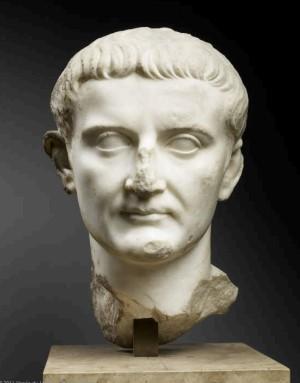
Image 160
Portrait of Tiberius
Provenance: Philomelium (modern-day Akşehir, Turkey)
Place of
conservation: Louvre Museum (Paris, France)
Chronology: 1-4 CE